The day after touring the eastern part of Crete was Easter. Sonja and I had already agreed from the very beginning that we would dye eggs so that we could symbolically mark this day with the other members of the group. Easter is celebrated on the same day in both Serbia and Greece, so in the end, we also shared eggs with the kind owners of the apartment complex in Malia where we were staying.
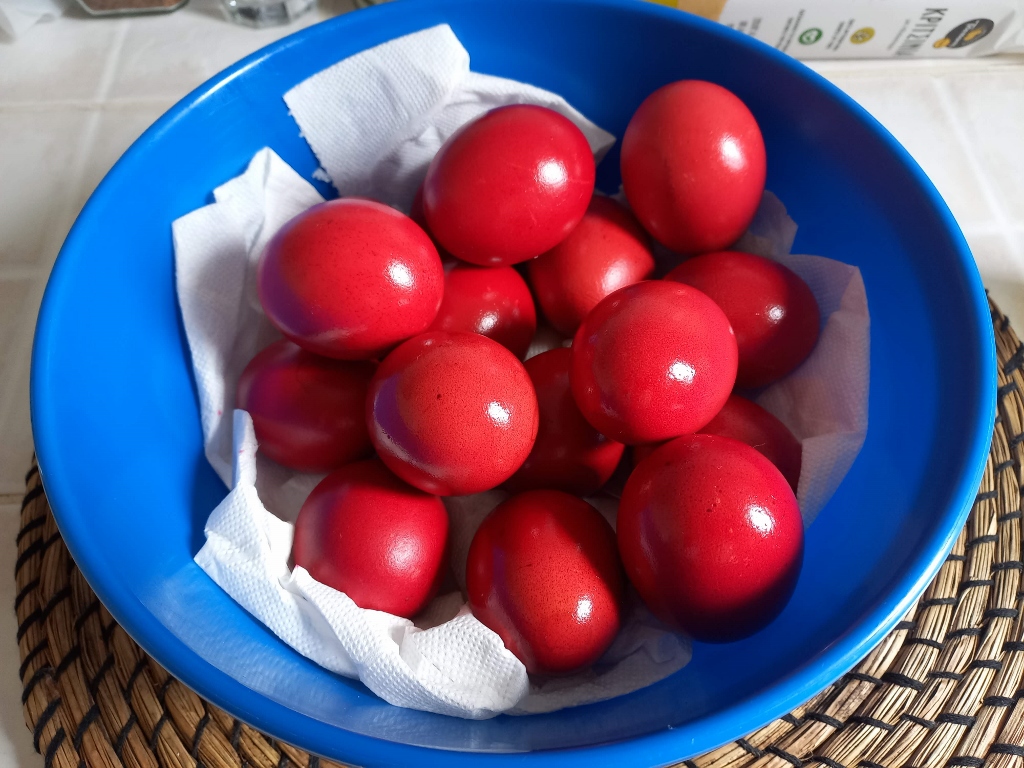 Easter eggs
Easter eggs
In addition, the morning was cloudy and rain had fallen during the night. However, when Sonja and I woke up, it was dry, even occasionally sunny, so we could have coffee on the terrace of our apartment before breakfast. All of this changed very quickly after breakfast as we slowly gathered, as the previous day had been long and somewhat tiring. Suddenly, a real downpour of clouds started, but fortunately, it didn't last long and the clouds mostly dispersed thanks to the strong wind blowing.
A bit later, in such weather, we all set off together in a convoy of vehicles in the westbound direction, towards Heraklion, but only about 15 kilometres farther, to the Aposelemis Wildlife Refuge. This area actually represents the mouth of the Aposelemis River coming from the direction of the gorge of the same name and it is also the name of the reservoir I have mentioned in: https://www.svudapodji.com/en/crete-24-2/.
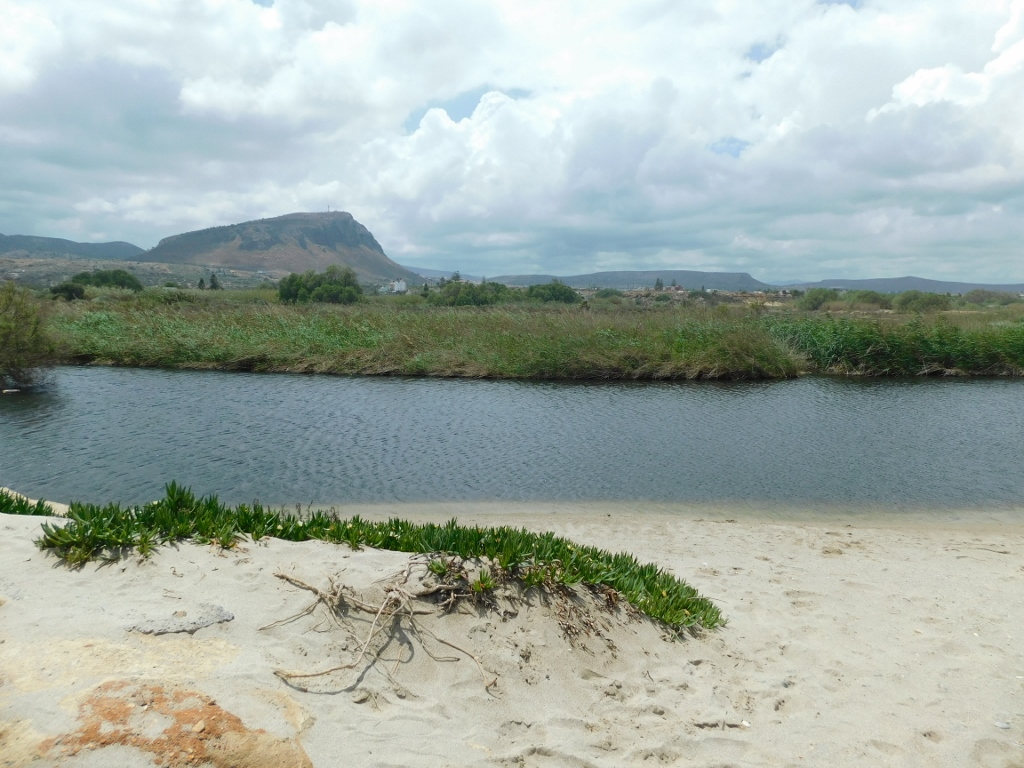 Aposelemis Wildlife Refuge
Aposelemis Wildlife Refuge
However, although there is water here, one should not expect a large river mouth leading to the sea – it all seems more like residual waters that, during periods of lower flow, turn into ponds and puddles.
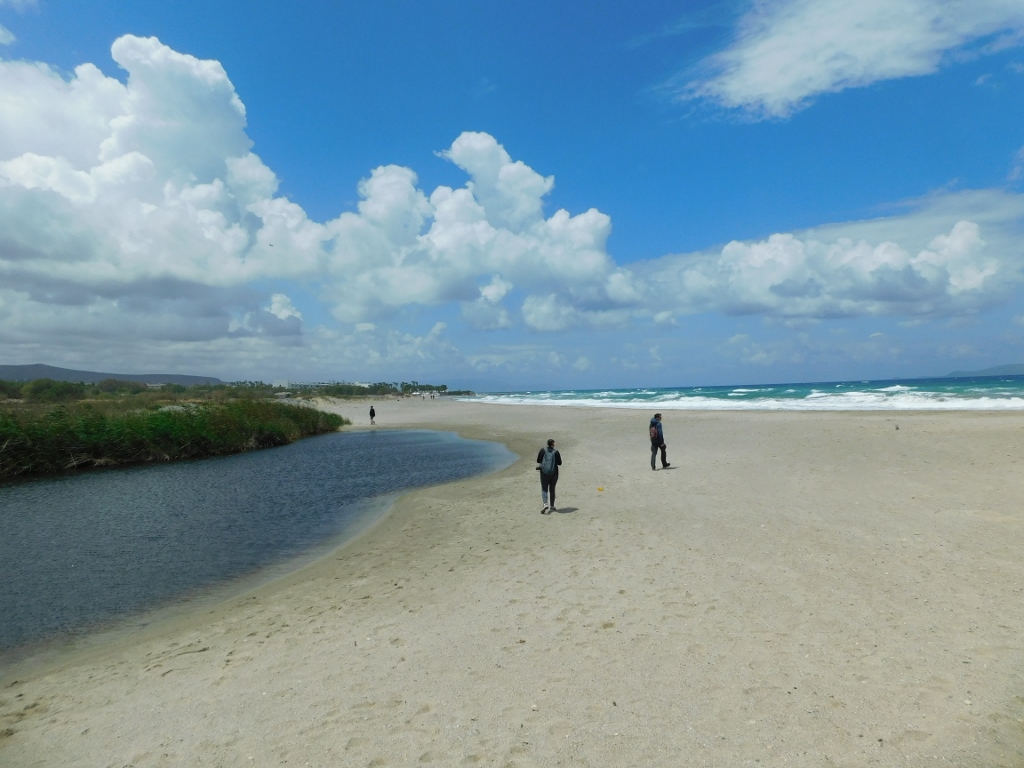 Mouth of the Aposelemis river
Mouth of the Aposelemis river
A street within Aposelemis settlement leads along the sea here, ending in a small elevation above the beach and the “river mouth.” I lingered there for a while, observing and taking photos of the surroundings. Some members of the group immediately grabbed their binoculars and set off to search for birds.
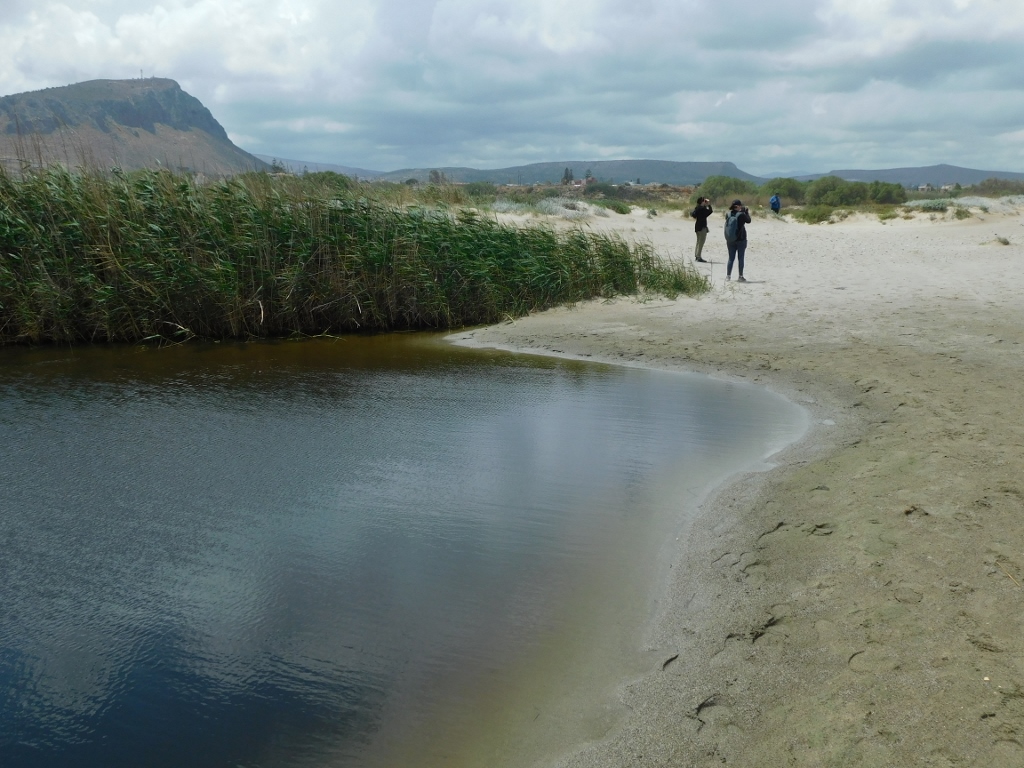 Where are those birds?
Where are those birds?
Soon, I joined them as well, but I searched for birds without binoculars, using just my eyes. Well, it wasn’t too bad. I managed to spot a little bird. It was a ruff (Philomachus pugnax).
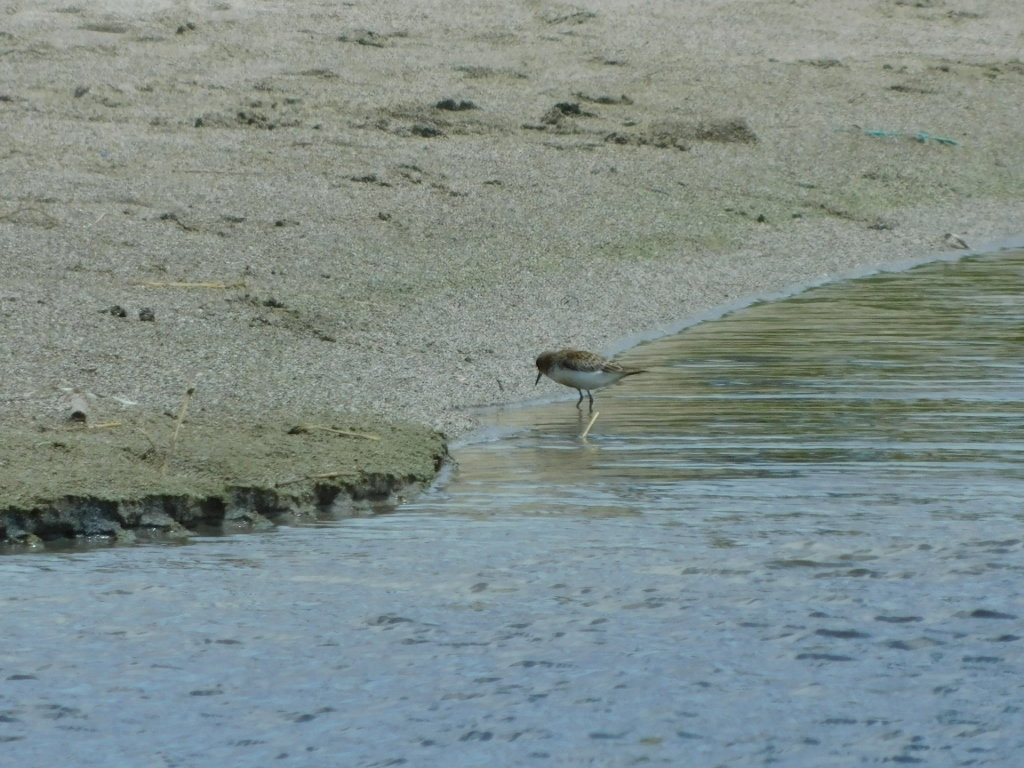 Ruff
Ruff
Of course, I made sure to stay close to the experts because they do see better after all, so I managed to capture a charming little ringed plover (Charadrius dubius) that almost blended into its surroundings.
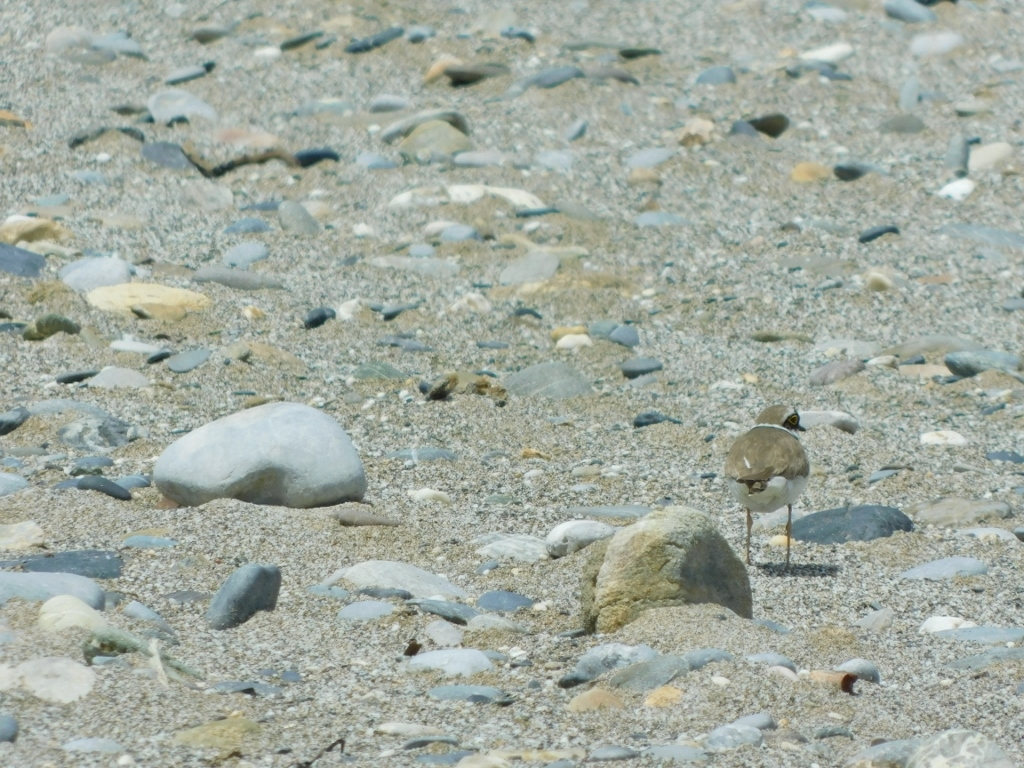 Little ringed plover
Little ringed plover
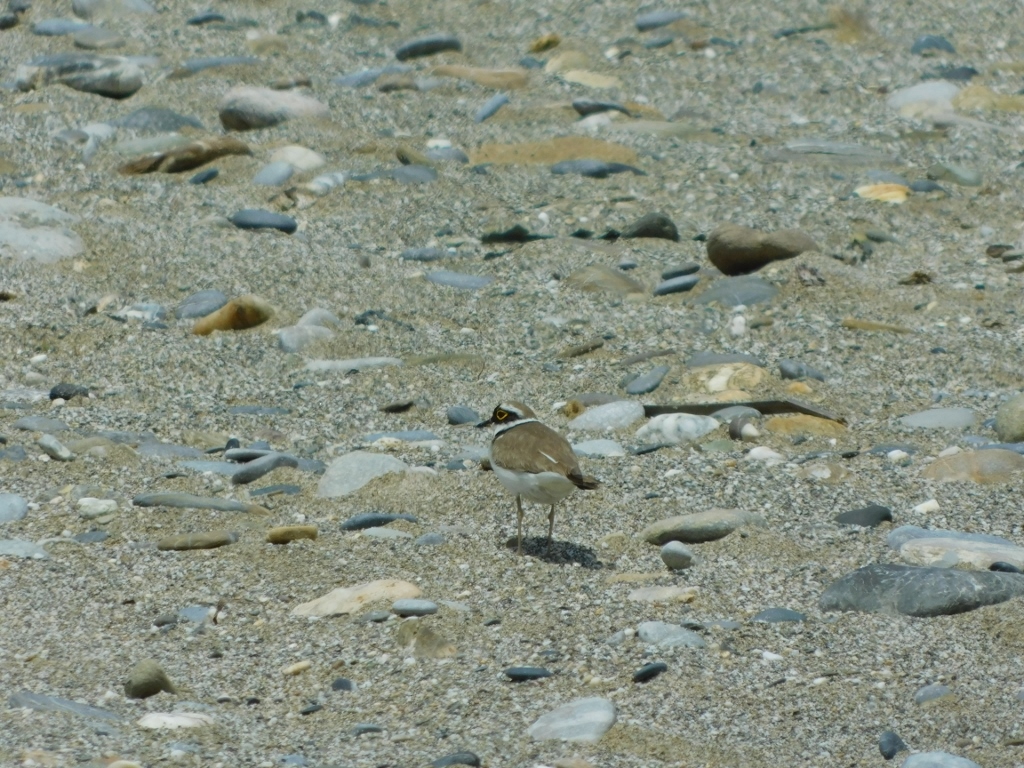 Little ringed plover
Little ringed plover
Up until now, we could see this on the beach or directly beside it, and then we took a path deeper into the Aposelemis Wildlife Refuge.
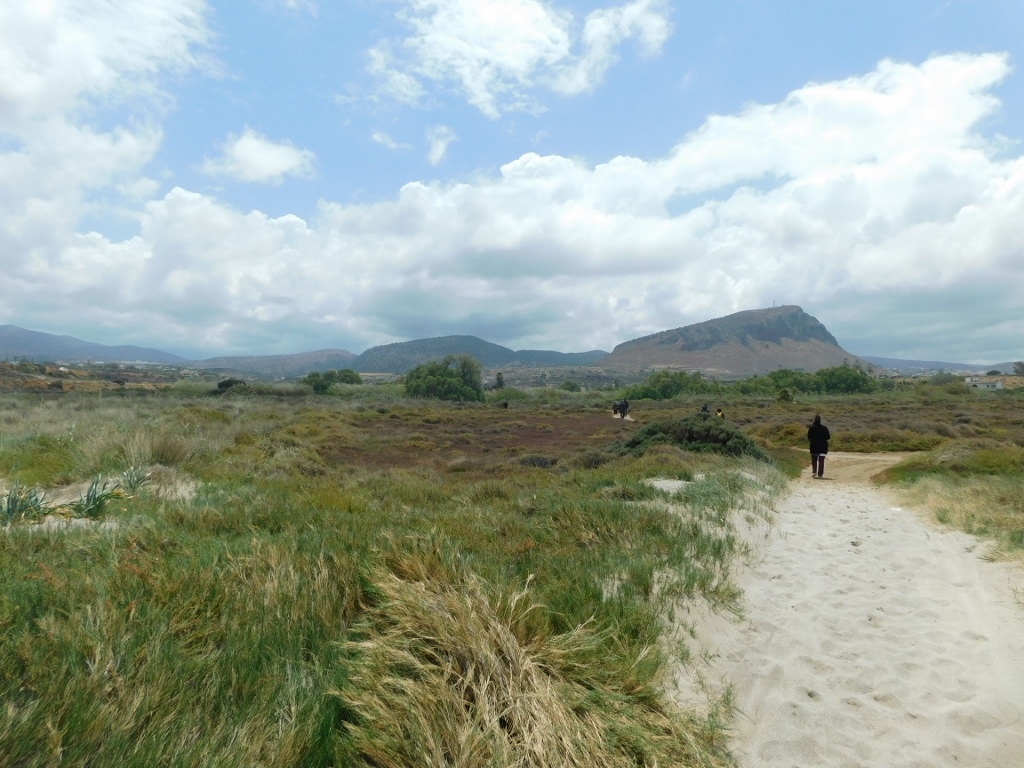 Aposelemis Wildlife Refuge
Aposelemis Wildlife Refuge
Here, in a small area, there are different sections with specific vegetation, so everyone found it interesting to observe different details or search for something special.
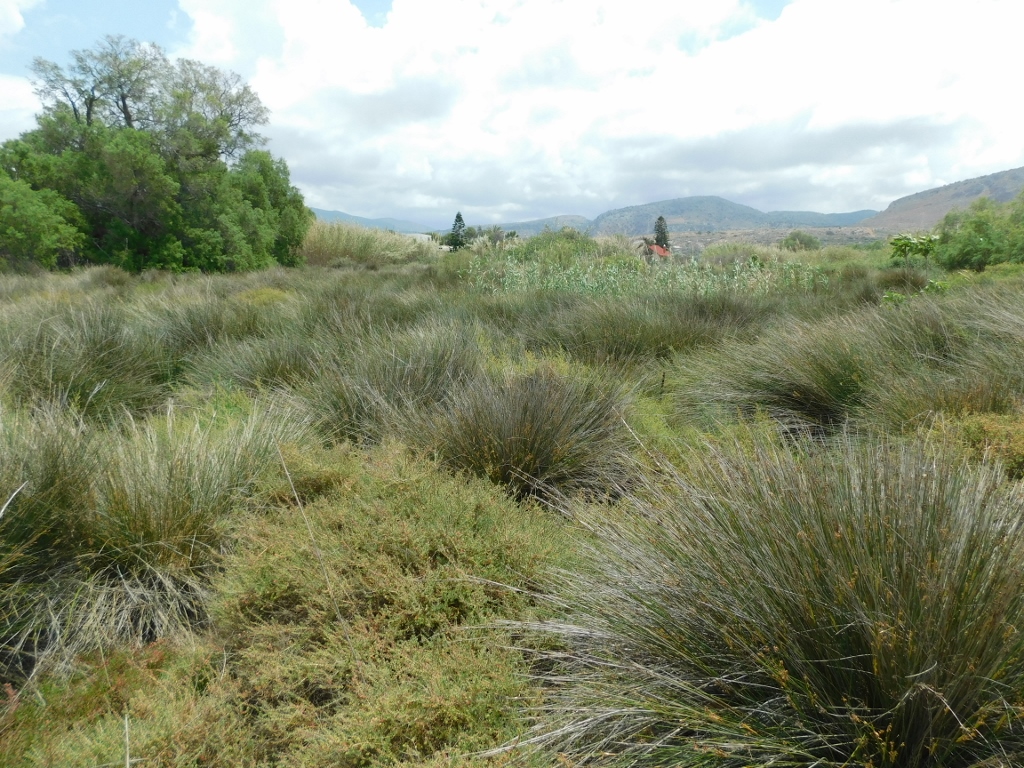 Aposelemis Wildlife Refuge
Aposelemis Wildlife Refuge
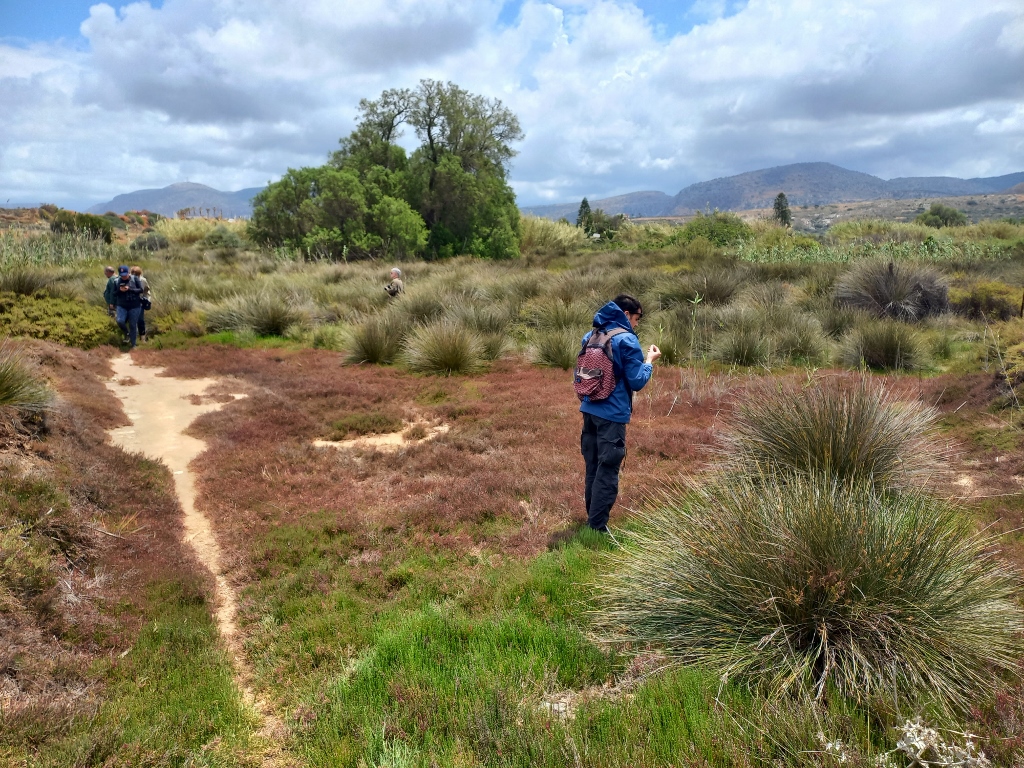 Saša, Beba, Ljilja, Oliver and Vuk in the Aposelemis Wildlife Refuge
Saša, Beba, Ljilja, Oliver and Vuk in the Aposelemis Wildlife Refuge
That’s how I noticed and then took a photo of a beautiful scarlet dragonfly (Crocothemis erythraea).
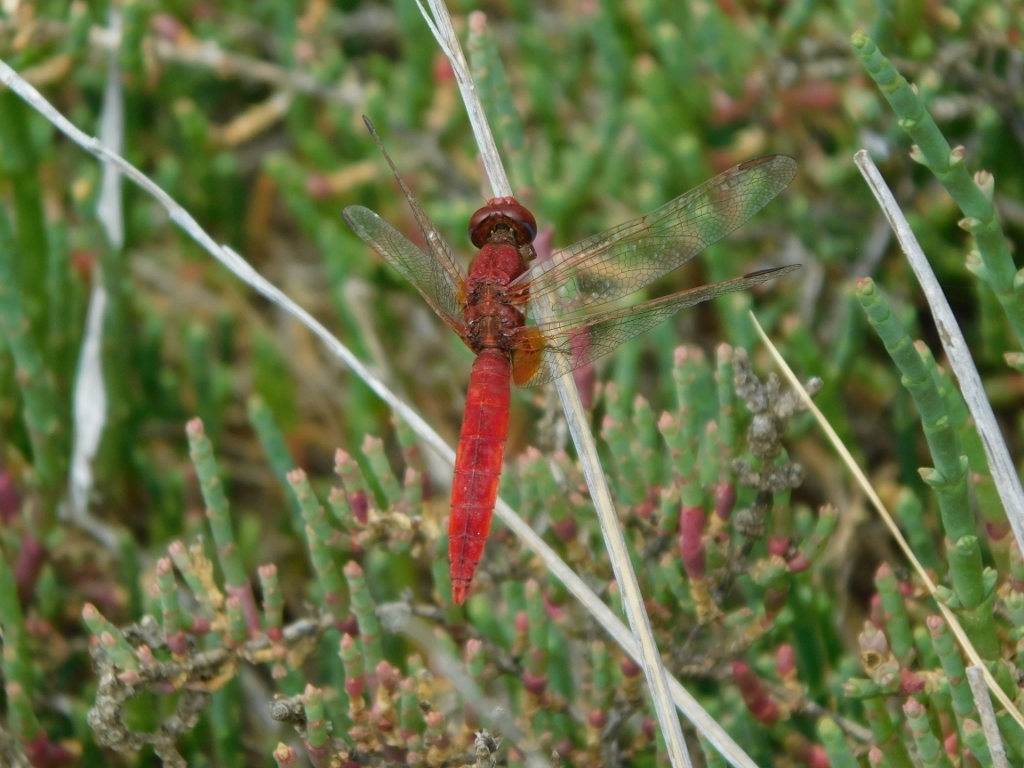 Scarlet dragonfly
Scarlet dragonfly
Afterwards we spread out a bit and soon I quietly joined Saša because he had spotted some birds in the puddle that was separated from the sea by the beach. It was important for me not to disturb the birds, but still be able to capture them on camera.
 Part of the Aposelemis Wildlife Refuge
Part of the Aposelemis Wildlife Refuge
And indeed, here I managed to see and capture three bird species. Saša told me what species they were, but I must admit I forgot. That is why, when writing these stories, I had to bother Vuk, who, along with Irena, greatly helped me identify some species. Without them, I would be stuck with “this is one bird species and this is another.”
To start with, I took a photo of a ruff (Philomachus pugnax).
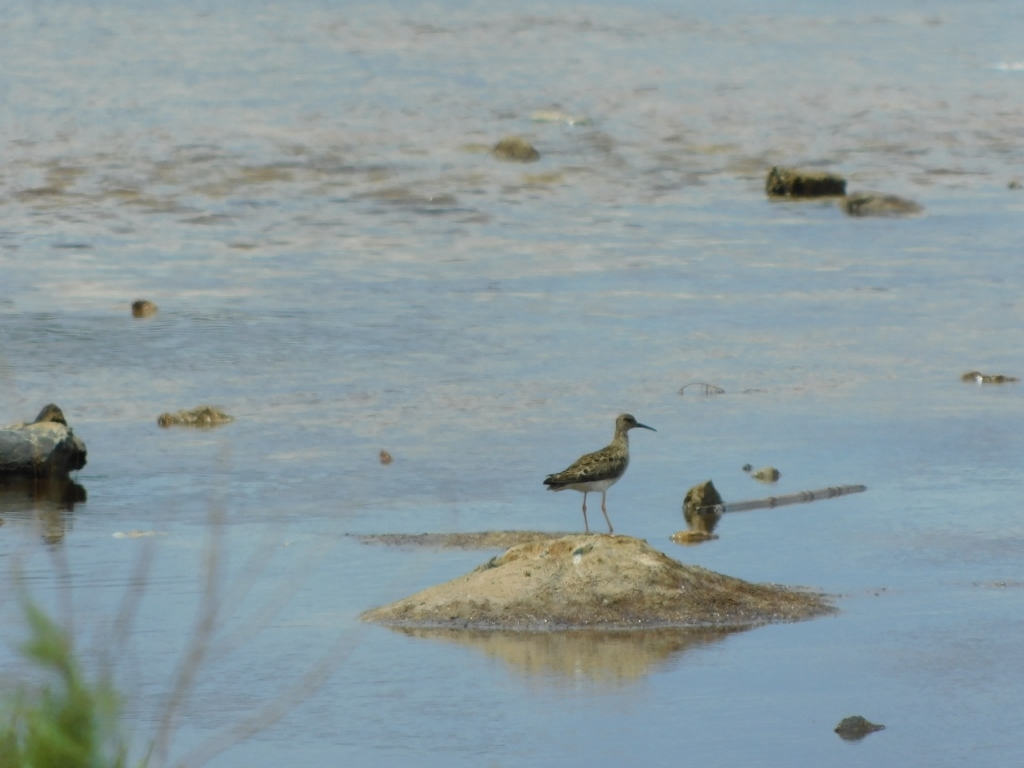 Ruff
Ruff
The bird then moved a bit, flying a few dozen metres and joining some other birds. It was really interesting trying to capture them without scaring them off. Now, to start with, here are two common ringed plovers (Charadrius hiaticula) and one little stint (Calidris minuta).
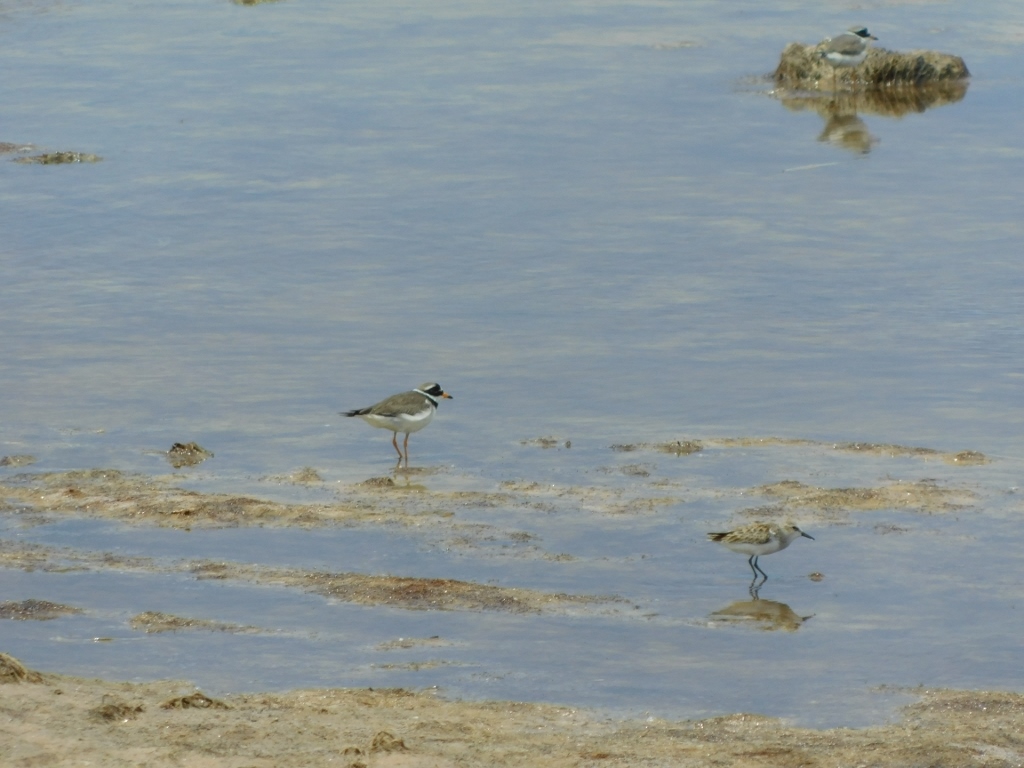 Two common ringed plovers and a little stint
Two common ringed plovers and a little stint
The ruff seemed to be keeping an eye on me, checking to see if I was there and behaving properly.
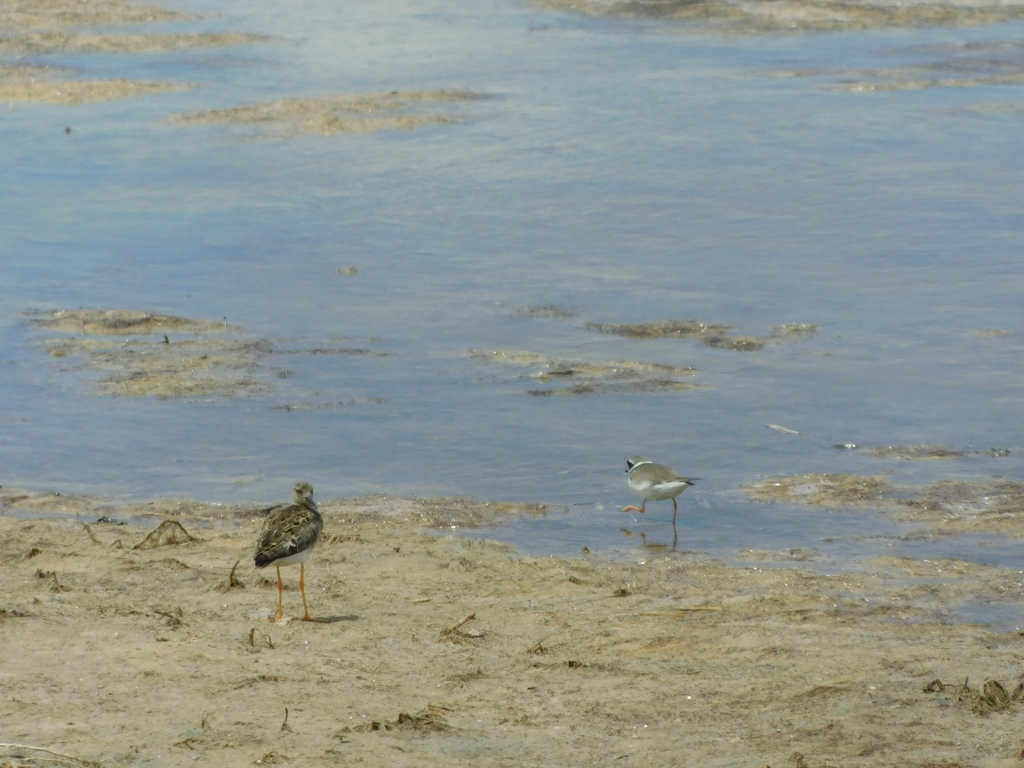 Ruff and common ringed plover
Ruff and common ringed plover
And then they all gathered in the same place and on the same photograph.
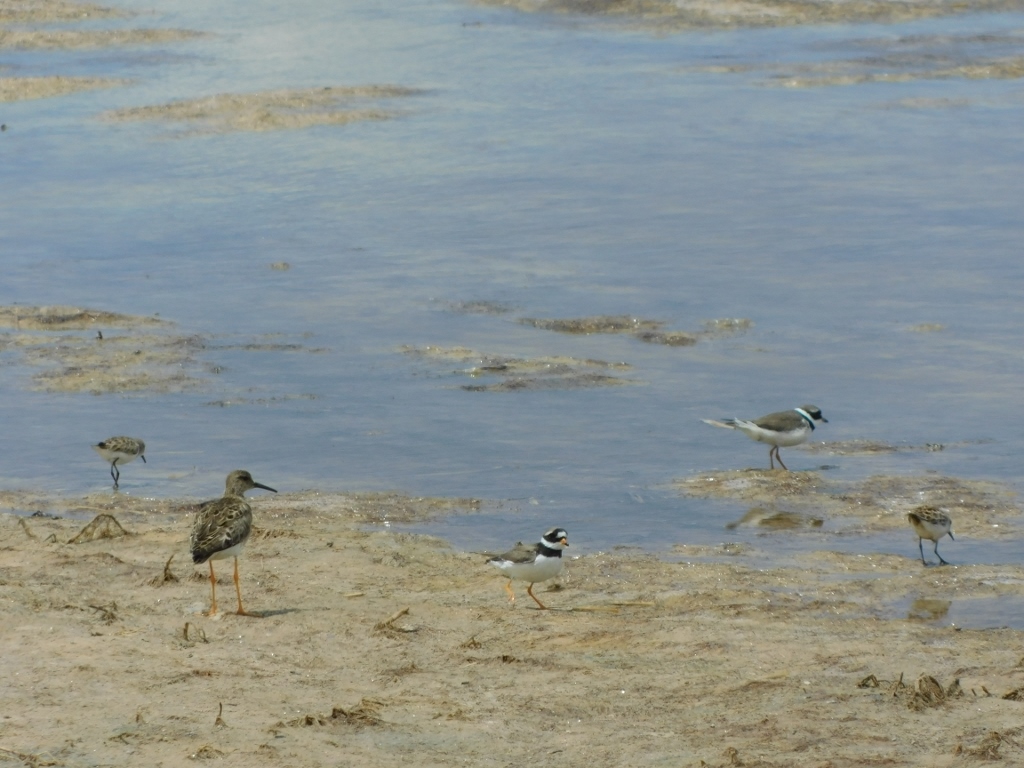 Ruff, two common ringed plovers and two little stints
Ruff, two common ringed plovers and two little stints
I took a photo of the ruff once more and then I could leave them in peace.
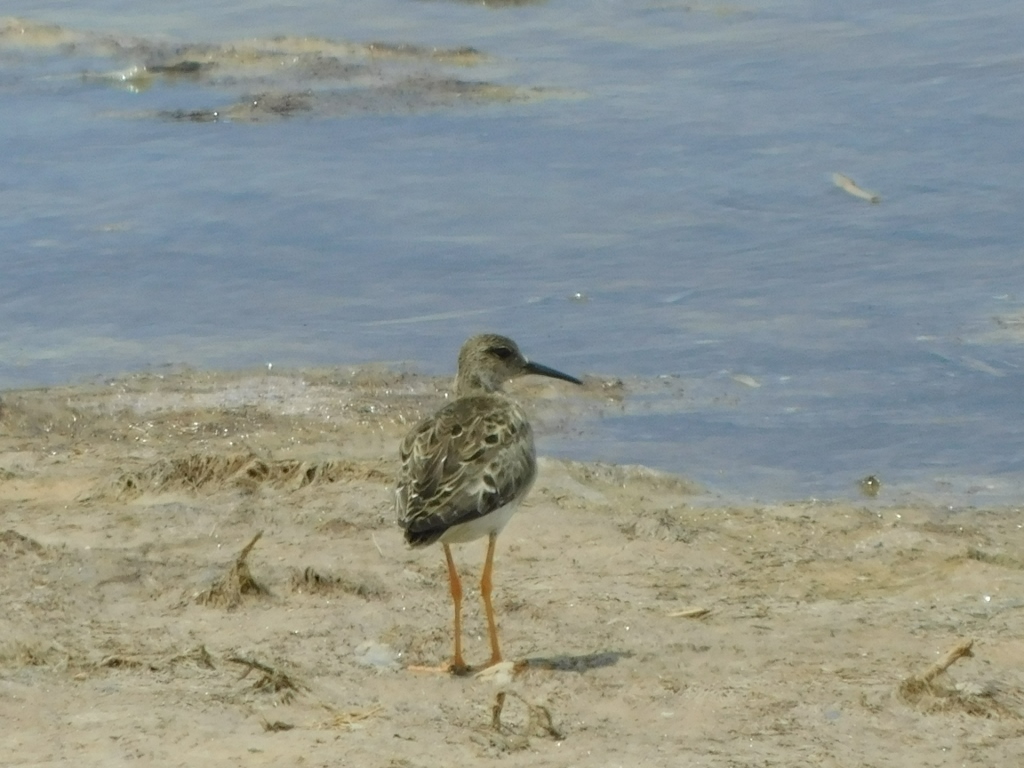 Ruff
Ruff
Along the way, I also paid attention to the plants, specifically one that was growing there and that intrigued me. Later on, I realised it was a good thing I captured it. The plant is quite well-known, especially in culinary circles where its young flower buds (capers) are used. This was the caper bush (Capparis spinosa).
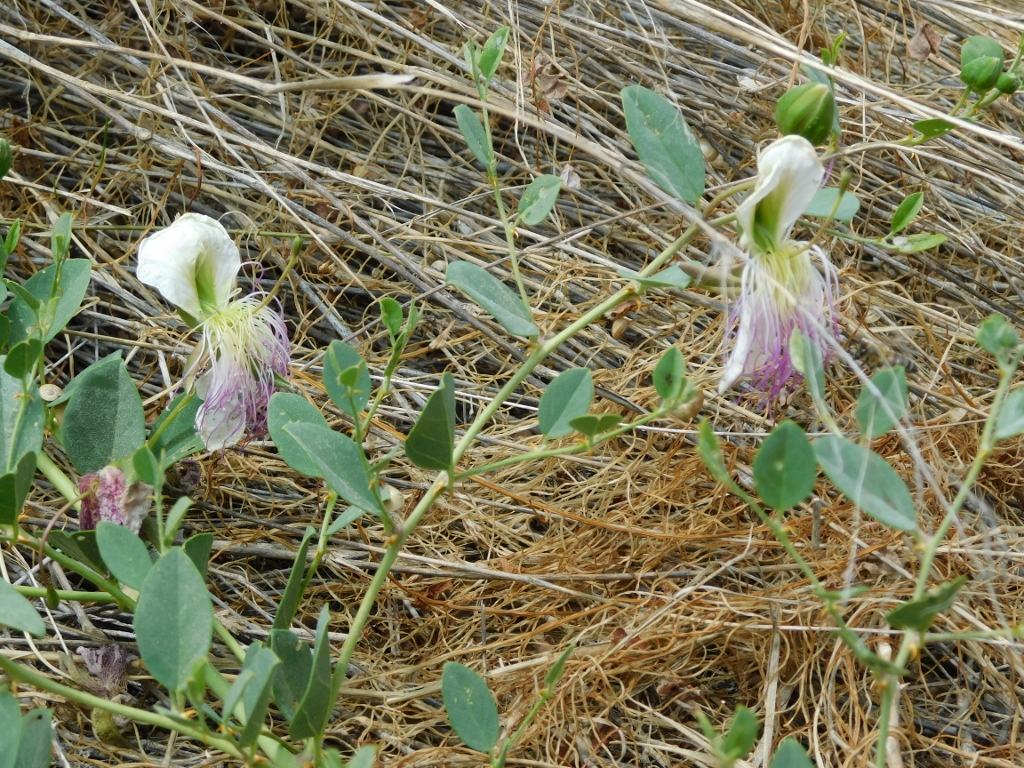 Caper bush
Caper bush
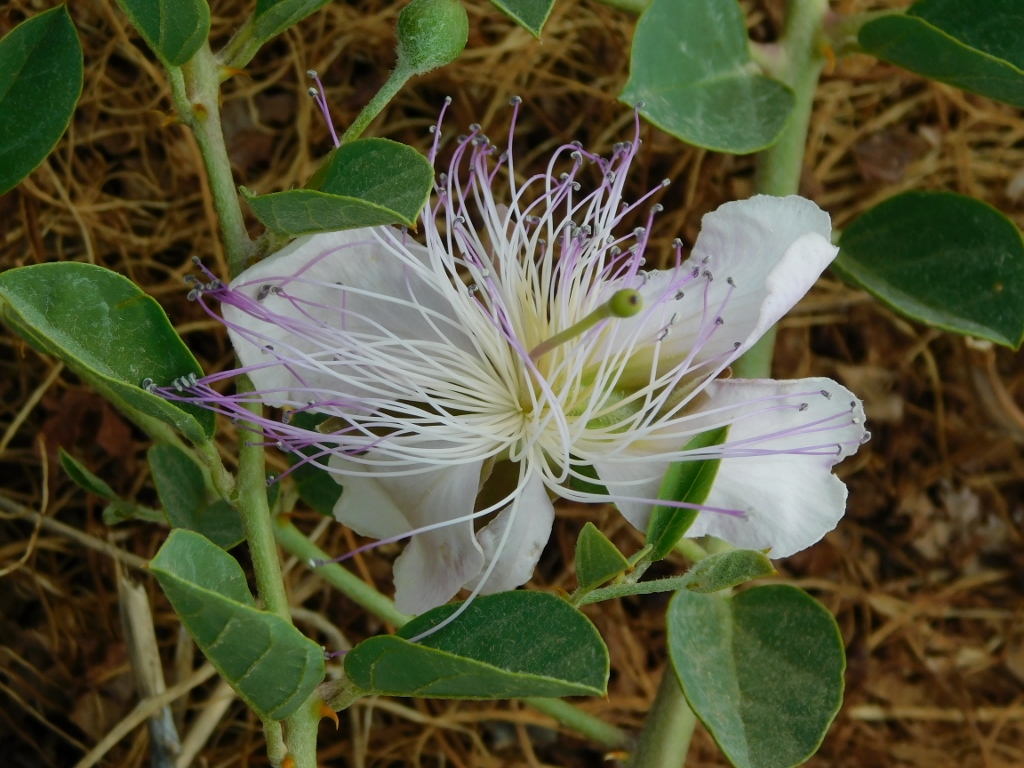 Caper bush
Caper bush
Then we all scattered around this area, while I wandered from one place to another. Later, I rejoined Irena, Marko and Vuk, which made it easier for me to spot some birds.
For example, I saw a hooded crow (Corvus cornix) in flight, a crested lark (Galerida cristata) and an Italian sparrow (Passer italiae).
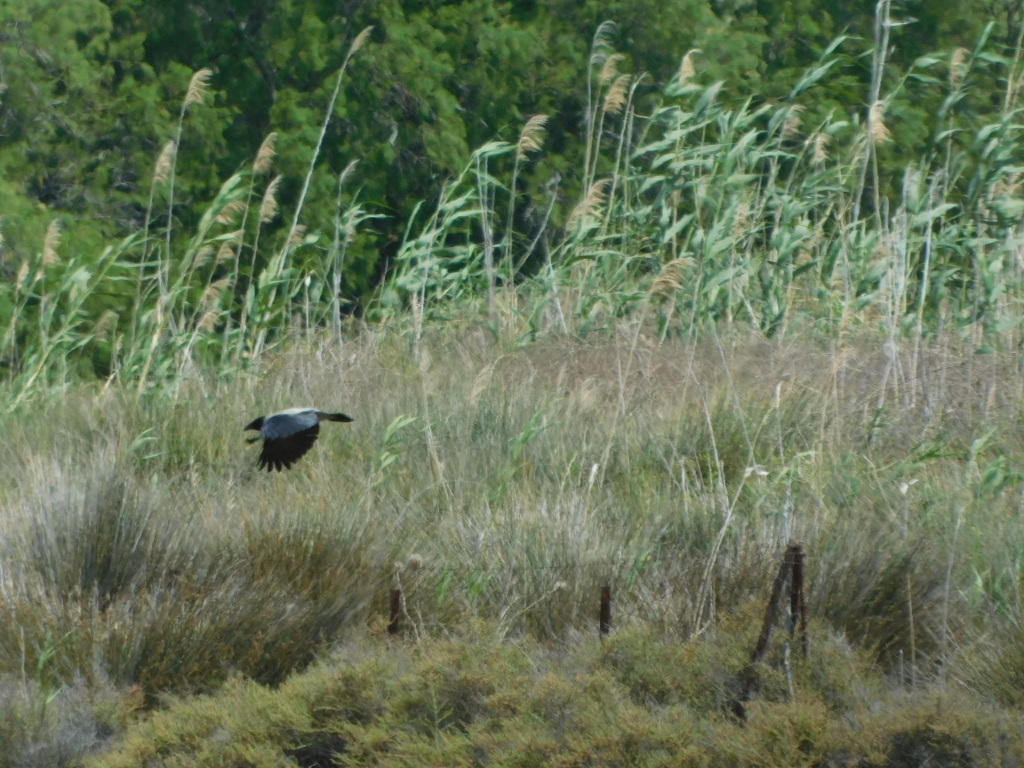 Hooded crow
Hooded crow
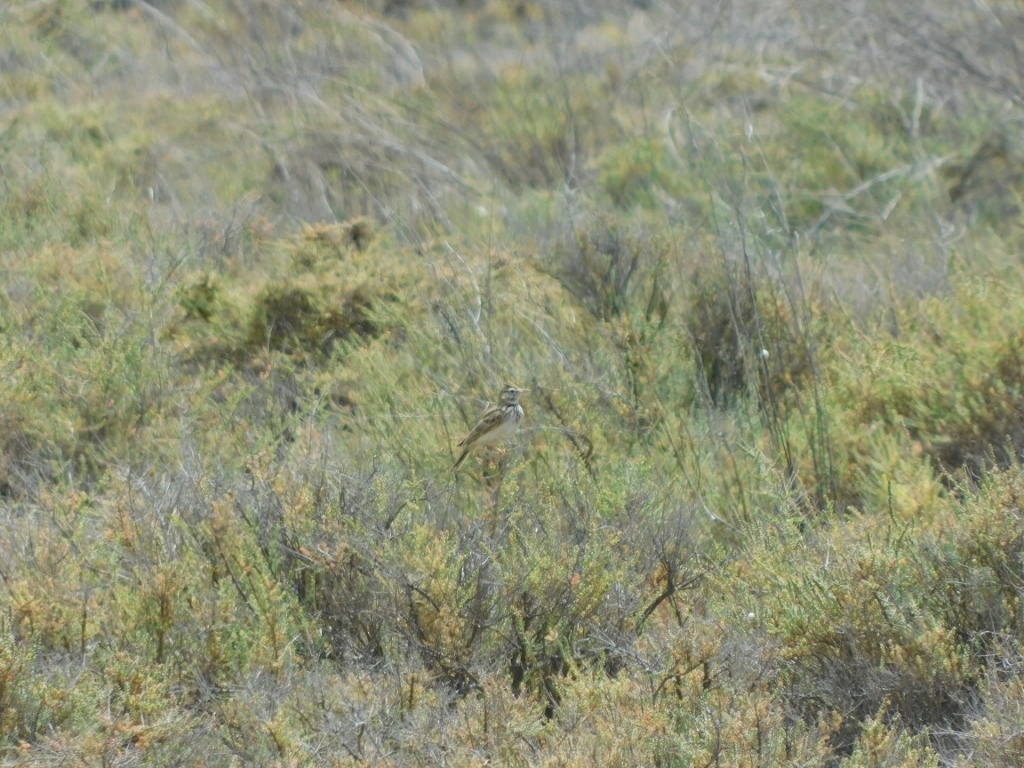 Crested lark
Crested lark
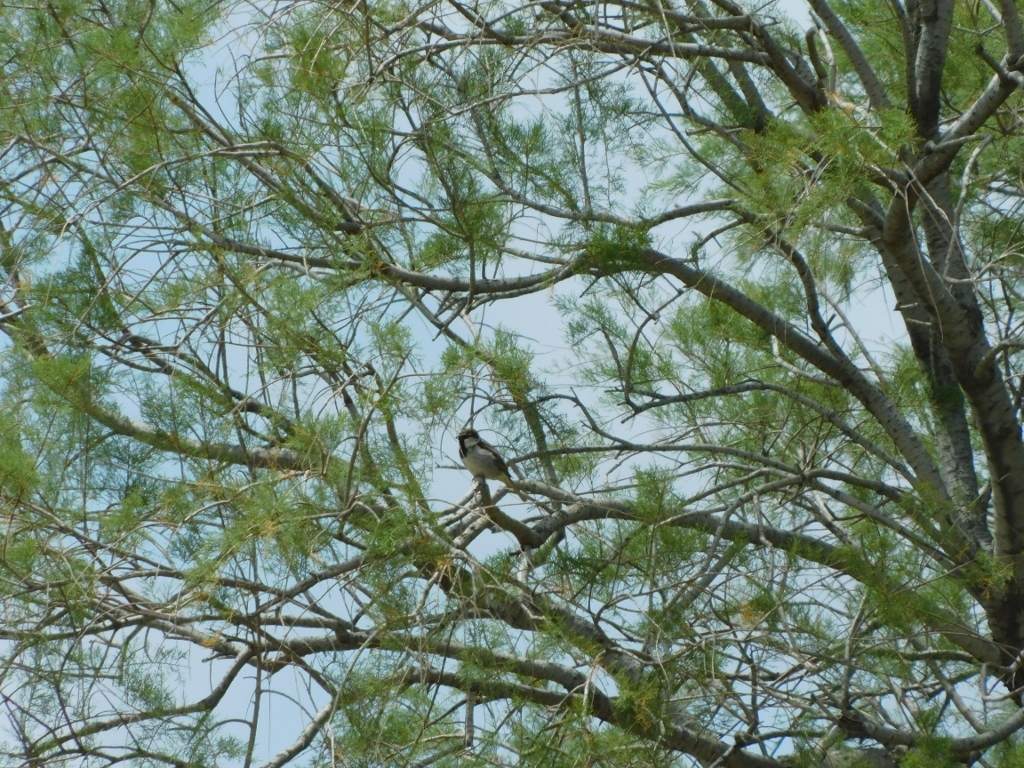 Italian sparrow
Italian sparrow
After this, I started slowly to make my way back to the cars, while in the meantime, the wind had picked up even stronger than before. It seemed to me that the waves were bigger too, while a couple of local ducks had nestled snugly next to the puddle belonging to the protected area.
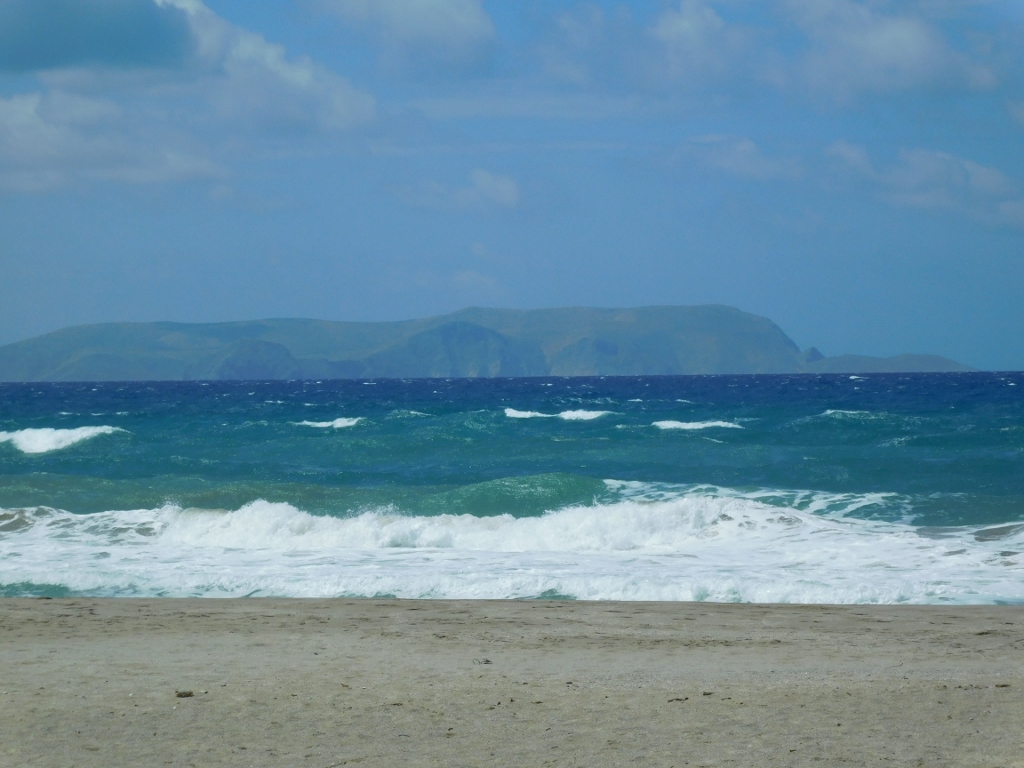 Sea in the town of Aposelemis when there is a strong wind
Sea in the town of Aposelemis when there is a strong wind
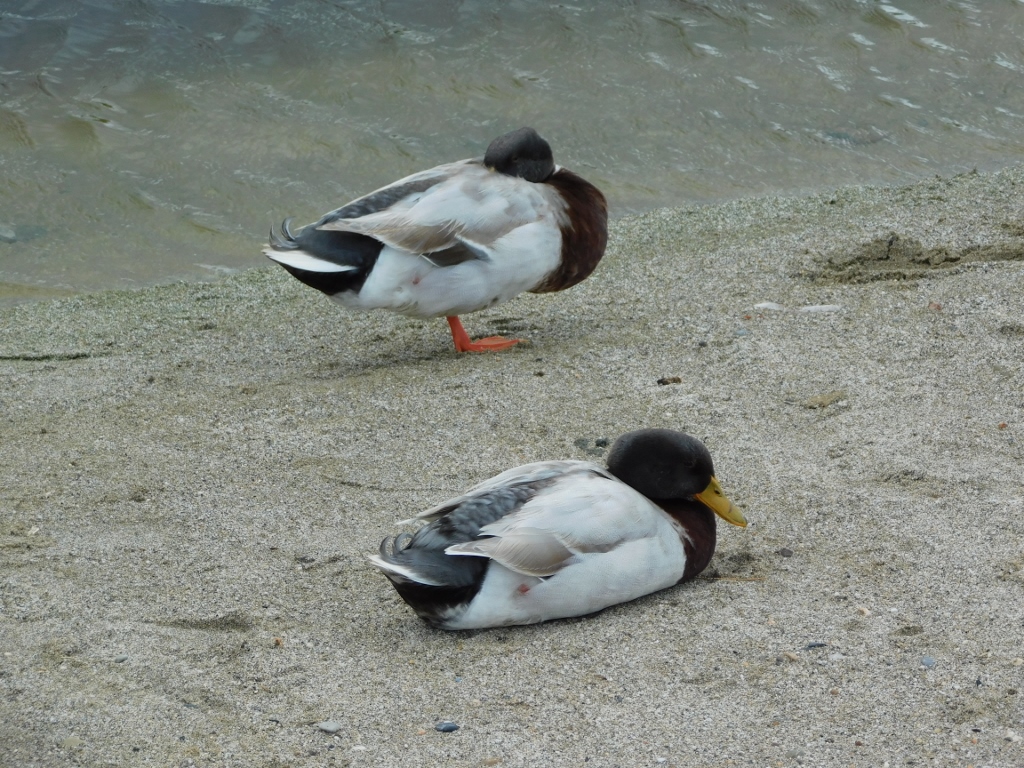 Local ducks when there is a strong wind
Local ducks when there is a strong wind
Although a good portion of the sky was still blue, a dark cloud appeared above us and rain began to fall, driven by the wind. I didn’t have any issues with it since I had a good jacket with a hood, but it was good that I returned so I could open the car for those who didn’t have “rain gear,” as the other drivers in the group were still busy birdwatching.
Moreover, Marko soon returned with Irena and Vuk, but we saw Saša alone in the distance, somewhere between the reeds and some trees. Since we couldn’t call out to him, Irena and Vuk went to inform him that the group was ready to move on. Meanwhile, Saša had disappeared from sight and, at one point, we saw Irena and Vuk quite far away, then they vanished into the greenery, too. The rest of us waited. Not long after, all three of them returned and as it turned out they had been navigating through some thorny grass, so they got some “souvenirs” on their skin, but that is the sacrifice they, as scientists in search of birds, have to make for ornithology.
 Waiting for the diligent ornithologists-researchers
Waiting for the diligent ornithologists-researchers
In any case, the rain stopped, the wind continued to blow very strongly and we drove a bit further within the town of Aposelemis, still close to the beach, to refresh ourselves together in a café, some with coffee, some with juice or ice cream, before continuing with our exploration.
After that nice break, we got back into the cars and drove just a bit further to take a walk beside the Aposelemis Wildlife Refuge, but more from the side rather than from the sea direction. In that part, there were more tall reeds, as you can see in the next photo.
 Aposelemis Wildlife Refuge
Aposelemis Wildlife Refuge
Here, I spotted and managed to capture quite well a beautiful heron. It was a black-crowned night-heron (Nycticorax nycticorax).
 Black-crowned night-heron
Black-crowned night-heron
I rarely manage to get close enough to a bird with the zoom on my camera, but since I succeeded in this case, here is another photo.
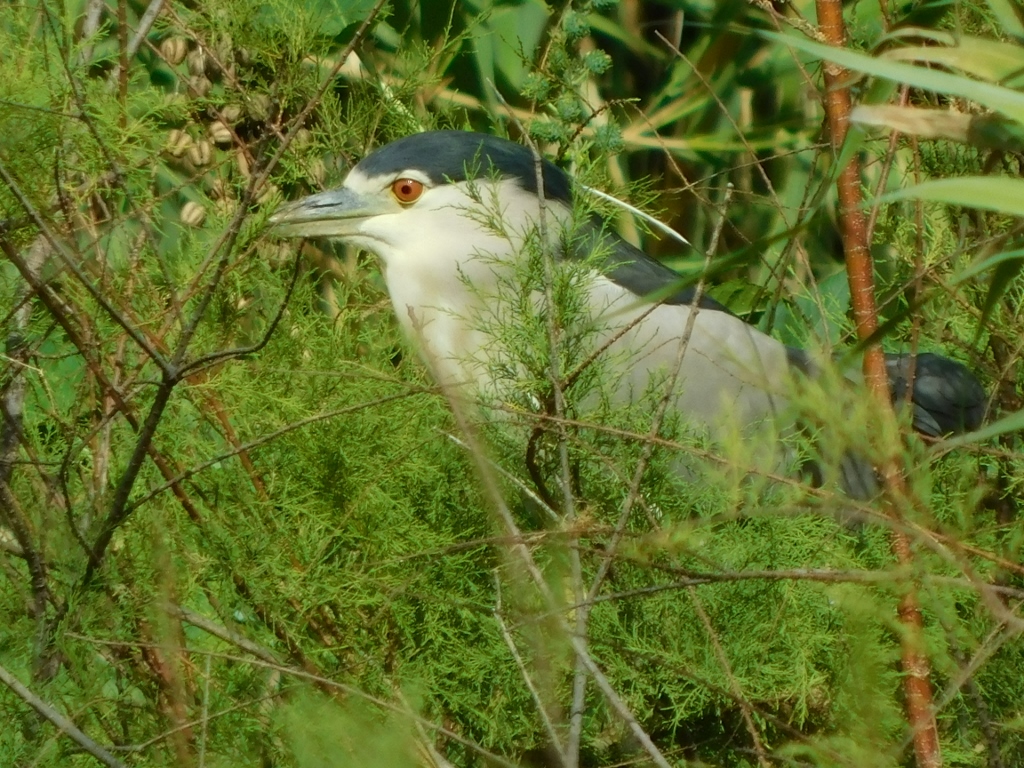 Black-crowned night-heron
Black-crowned night-heron
Since it was Easter, Sonja and I agreed to make ourselves a nice holiday lunch and we had already bought all the ingredients we needed. So, we soon returned to the apartment complex from here. Our late lunch was excellent and when the other group members returned, we spent some more time with them before retiring to bed.
Of course, Sonja’s and my lunch was quite simple given the circumstances, but no less festive. When I returned home to Belgrade, although the holiday had passed, I decided to make a sweet pie that I have read Greeks enjoy for Easter. That is how I got a new recipe:
RUFFLED PIE
- 7-8 phyllo sheets
- 100 g butter
- 5 eggs
- 160 g sugar
- 250 ml double cream
- 120 ml milk
- 10 g of vanilla sugar
Each phyllo dough sheet is generously brushed with melted butter and then ruffled and arranged in a baking dish. The sheets can be arranged spirally or as “rosettes” and it is not crucial if they tear in some places. This is baked at 180 degrees Celsius for about 25 minutes.
While the phyllo dough is baking, beat the eggs, add sugar and continue beating. Then add the double cream, milk and vanilla sugar, and mix everything together well.
The baking dish is taken out of the oven and the phyllo dough ruffles that have already gained colour are poured over with the eggs and milk mixture. It is important that the liquid ingredients do not overflow the top of the ruffled sheets. To taste and preference, the pie can be sprinkled with a little cinnamon and topped with some fruits, such as raspberries, blueberries, etc.
Bake at 180 degrees Celsius for another 20-25 minutes, then sprinkle the pie with powdered sugar and cinnamon.
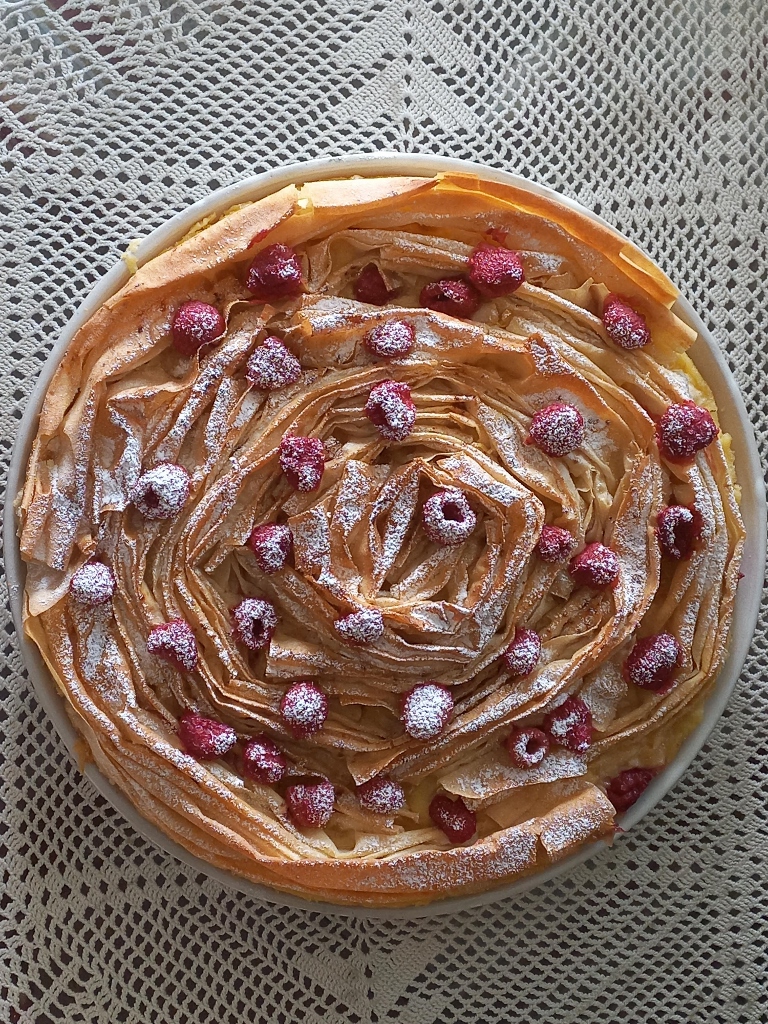 Greek ruffled pie done in my way; of course, served on the plates I have made myself
Greek ruffled pie done in my way; of course, served on the plates I have made myself
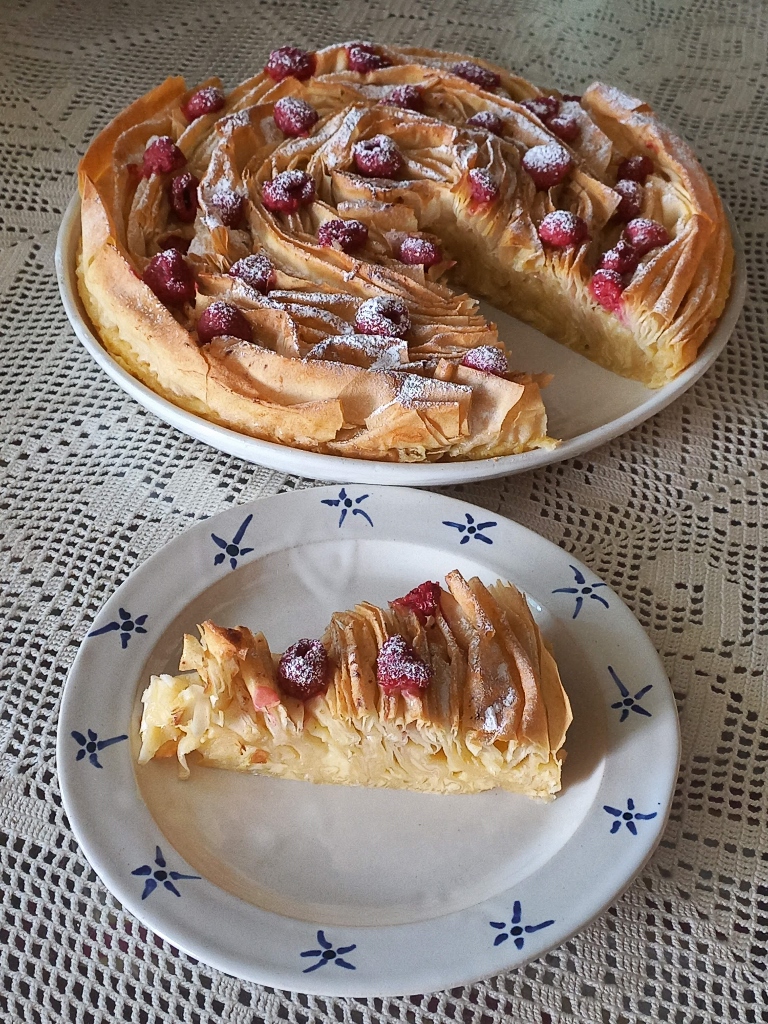 Greek ruffled pie done in my way; of course, served on the plates I have made myself
Greek ruffled pie done in my way; of course, served on the plates I have made myself
The next day, after breakfast, we drove towards Heraklion and went a little further, then headed south following a modern and wide road. But at some point, we veered off that road and started taking older roads, climbing up the slopes of the Psiloritis mountain range. The highest mountain within the range and also the highest on Crete is Mount Ida, with a height of 2456 meters.
By the way, Mount Ida was a sacred mountain in ancient Greece, as legend has it that Zeus was born in a cave here. Admittedly, according to another legend, still on Crete but a bit further east, Zeus was born in a cave located on the Lasithi Plateau.
Anyway, we passed through a charming village, Zaros, but without stopping, then we turned onto an even smaller road and ventured further into the mountains. We reached a widening where it seemed like the asphalt road ended, so we all got out of the cars to see exactly where we were and to check if we could spot any birds in the sky.
 Surroundings of village Zaros
Surroundings of village Zaros
This certainly wasn’t utterly pointless, as the high mountains surrounded us, but the only partially interesting sight here was the monastery of Saint Nicholas, or Agios Nikolaos, located at the entrance to the beautiful Rouvas canyon.
We stayed very briefly here and on our way back to the main road through the village, we even passed by Zaros Lake, which is considered a local attraction. However, although we all wanted to grab a coffee or juice, we didn’t actually stop because it was too crowded.
Namely, we were a group of bird enthusiasts on a mission – to find the bearded vulture (Gypaetus barbatus). I have mentioned at the beginning of these travel tales from Crete in 2024 that one of the main reasons we came here was precisely to find the bearded vultures.
These magnificent birds unfortunately are on the verge of being threatened and their numbers are generally declining. On the mainland Balkans, bearded vultures have disappeared, but there are still some, although not in large numbers, here in Crete. So, it was quite important for us to spot them.
As far as I understood, there are various websites and apps where people can report their bird sightings, including rare species like the bearded vulture. Thanks to the ornithologists in our group, we were aware that bearded vultures could be spotted in this part of Crete. That is why we came here.
We continued driving for about ten more kilometres to the village of Kamares because the ornithologists in the group had information about a local man who regularly sees and records bearded vultures in the vicinity of this village. We had to move a few times, but all of that was near the village. We would stop briefly and get out of the cars, while the experts in our group observed the surroundings. If they weren’t satisfied or didn’t spot anything, we would continue driving to the next safe parking spot. Since I wasn’t helpful in the bird spotting, I focused on taking photos of the surroundings.
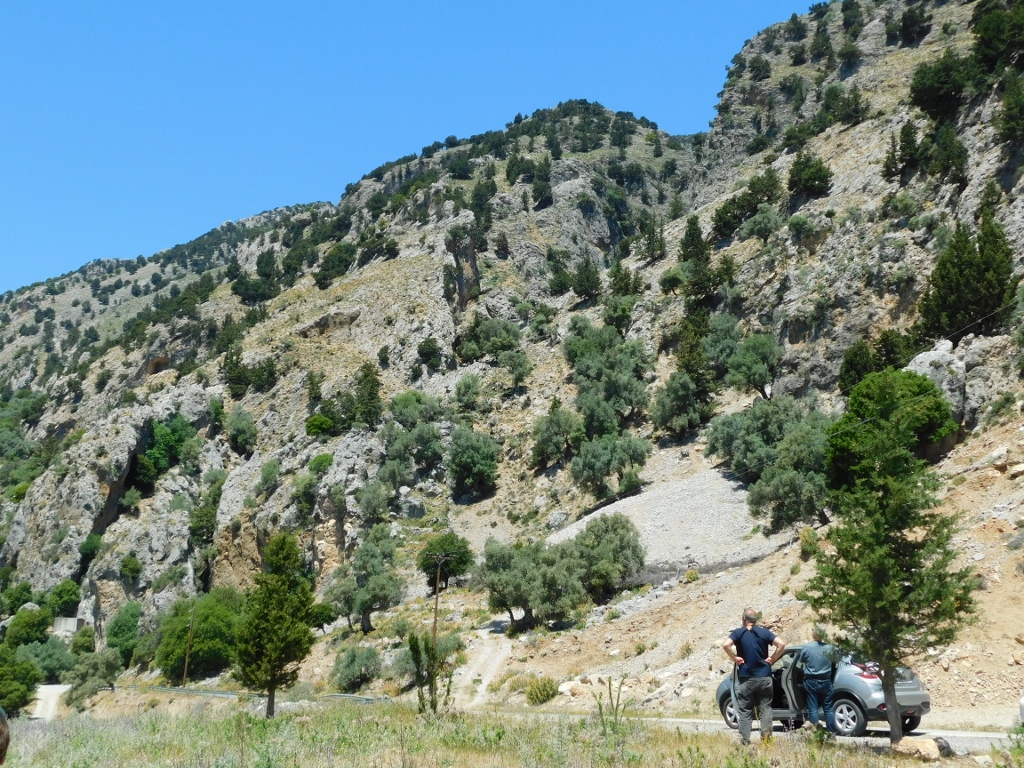 Search for the bearded vultures on the slopes of the Psiloritis mountain range
Search for the bearded vultures on the slopes of the Psiloritis mountain range
 Lower sections of the Psiloritis mountain range
Lower sections of the Psiloritis mountain range
And so we reached a parking area from where we managed to see some griffon vultures (Gyps fulvus). Spotting the griffon vultures was important because sometimes a bearded vulture may “hide” among them.
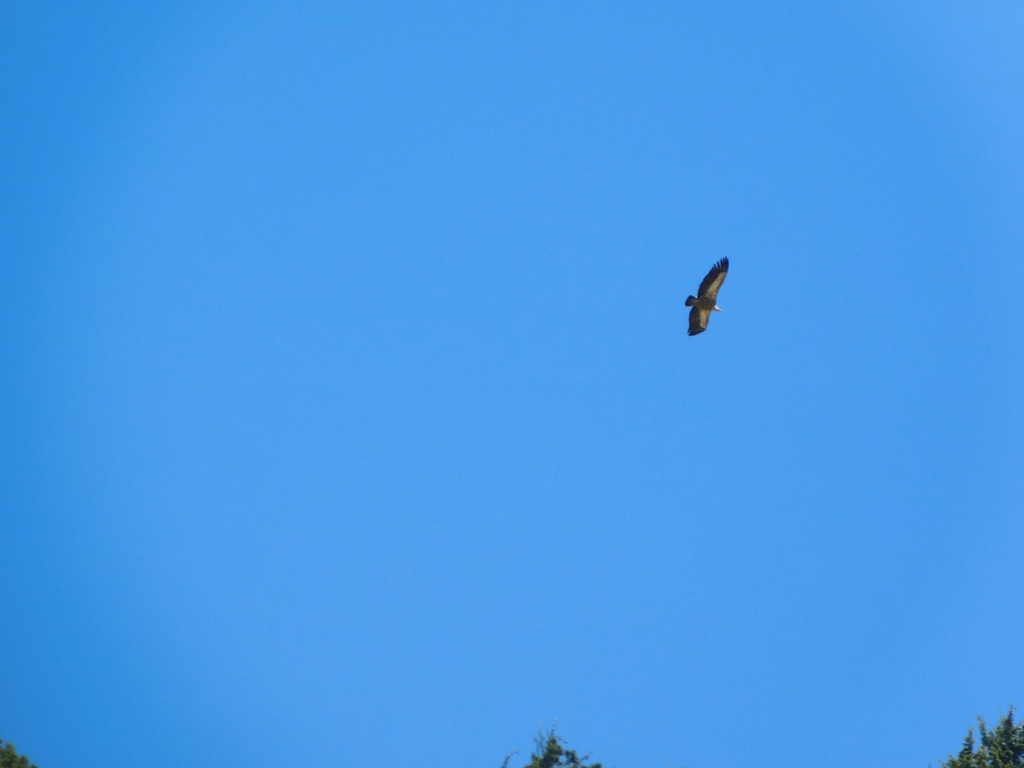 Griffon vulture
Griffon vulture
Spotting birds is indeed not an easy task. The next three photos illustrate this perfectly.
The first one shows a part of the mountain with a narrow and high gorge, known as the Kamares Gorge.
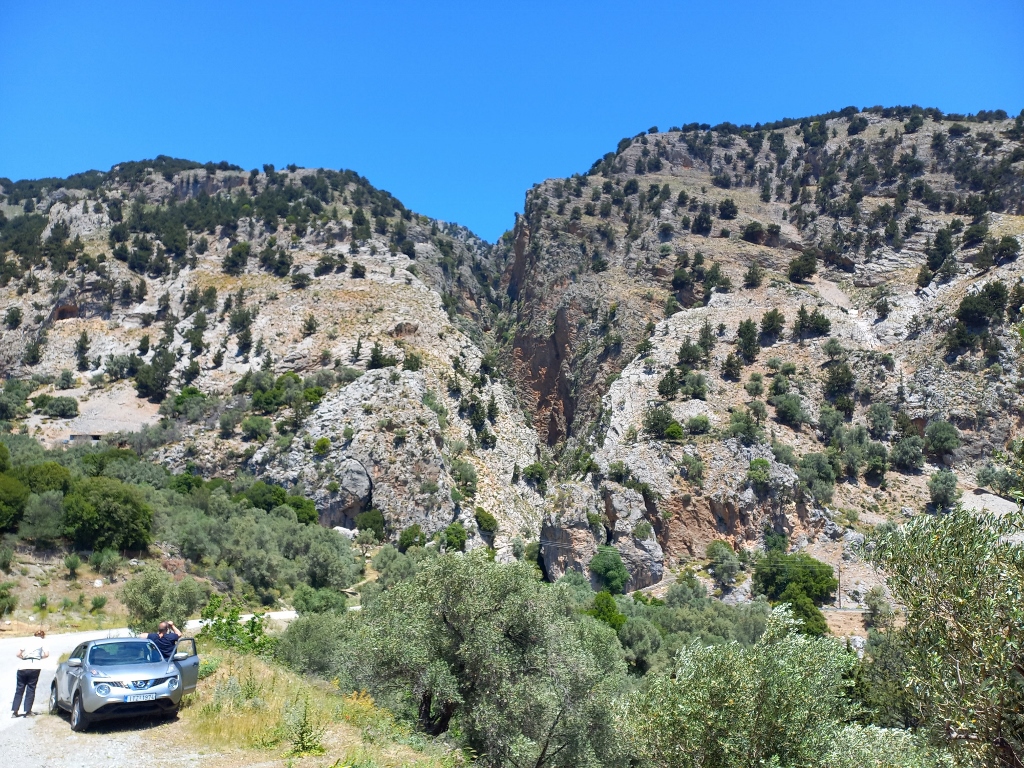 View at the Kamares Gorge
View at the Kamares Gorge
As I zoomed in to the maximum optical range, it was possible to see the cliffs and there was also a griffon vulture standing there. More precisely, it’s barely discernible in the photo.
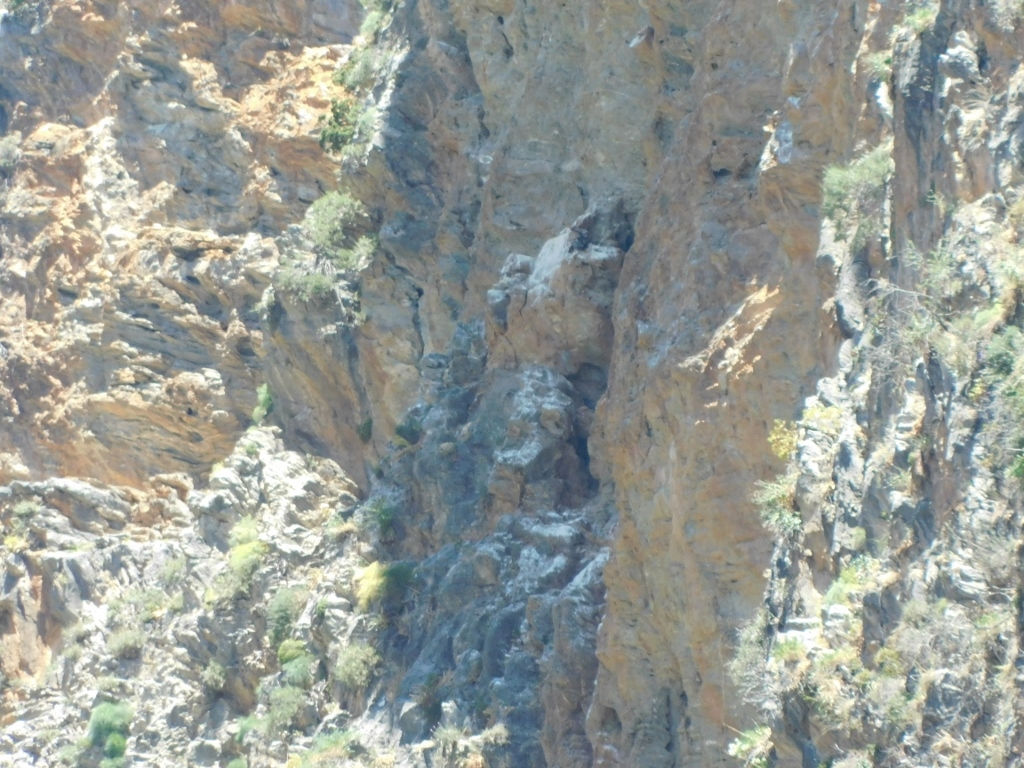 Kamares Gorge cliffs and a griffon vulture
Kamares Gorge cliffs and a griffon vulture
Only when I zoomed in using digital zoom, the griffon vulture became more visible, although still quite barely.
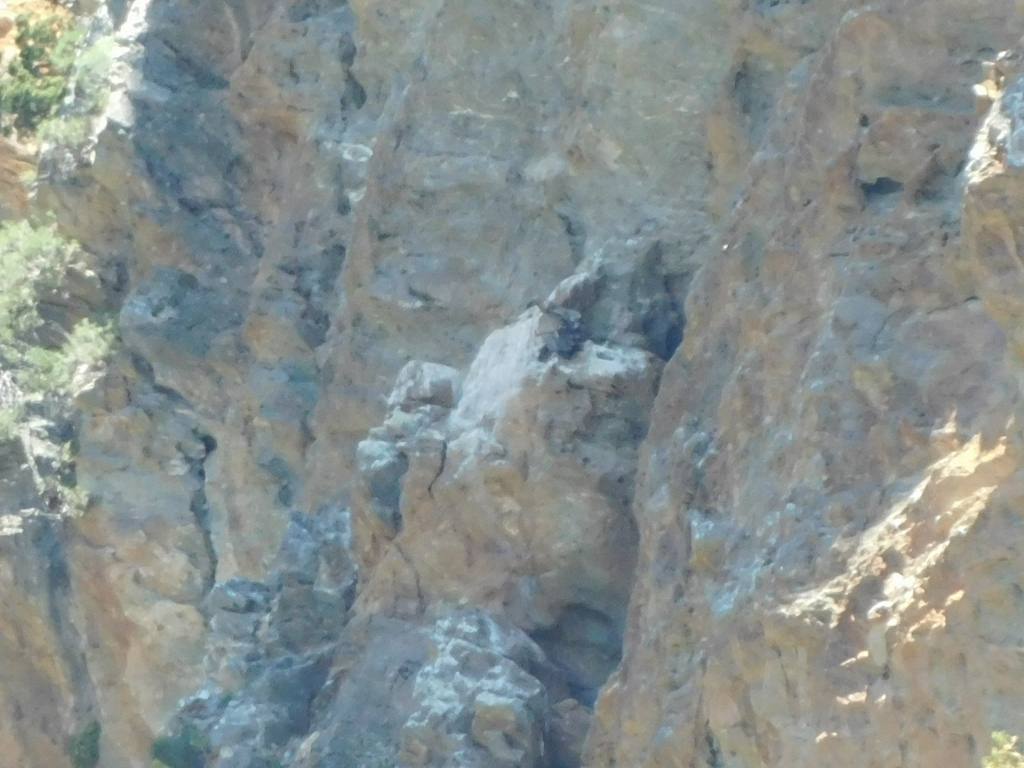 Kamares Gorge cliffs and a griffon vulture
Kamares Gorge cliffs and a griffon vulture
Again, Vuk enumerated numerous different species here, while I, along with Ljilja, even spotted an interesting species, but it quickly flew over to the other side, so no chance for photography. It was a red-billed chough (Pyrrchocorax pyrrhocorax).
However, all of this was still very interesting and beautiful.
Since we noticed some steps leading from the road into the rocks, a few of us went to the entrance to the Kamares Gorge.
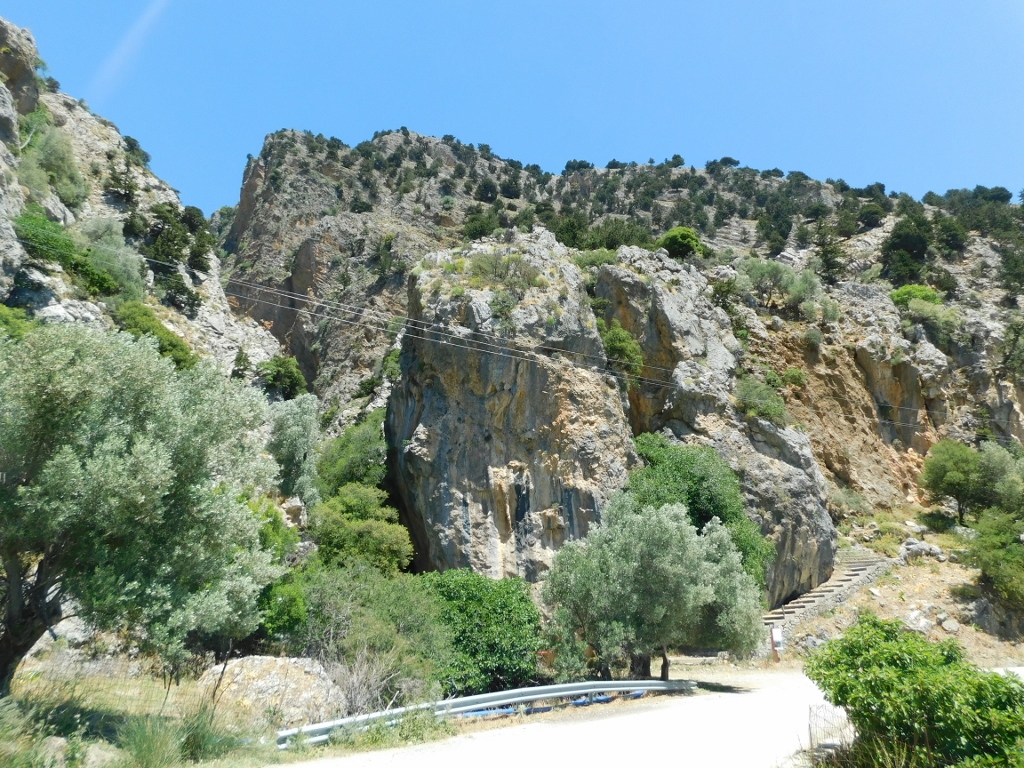 Kamares Gorge cliffs and stairs beside the road
Kamares Gorge cliffs and stairs beside the road
As it turned out, there was a high metal fence here, so it was quite clear that we couldn’t enter the gorge (or exit from it, as it is usually explored from the top to the bottom). I assumed it was probably too early in the season for this passage to be open to visitors. However, later I read that the 5 km long gorge is impressive, but also technically demanding – it is not meant for regular hiking; special mountaineering equipment and skills are required, as it features as many as 36 technical descents.
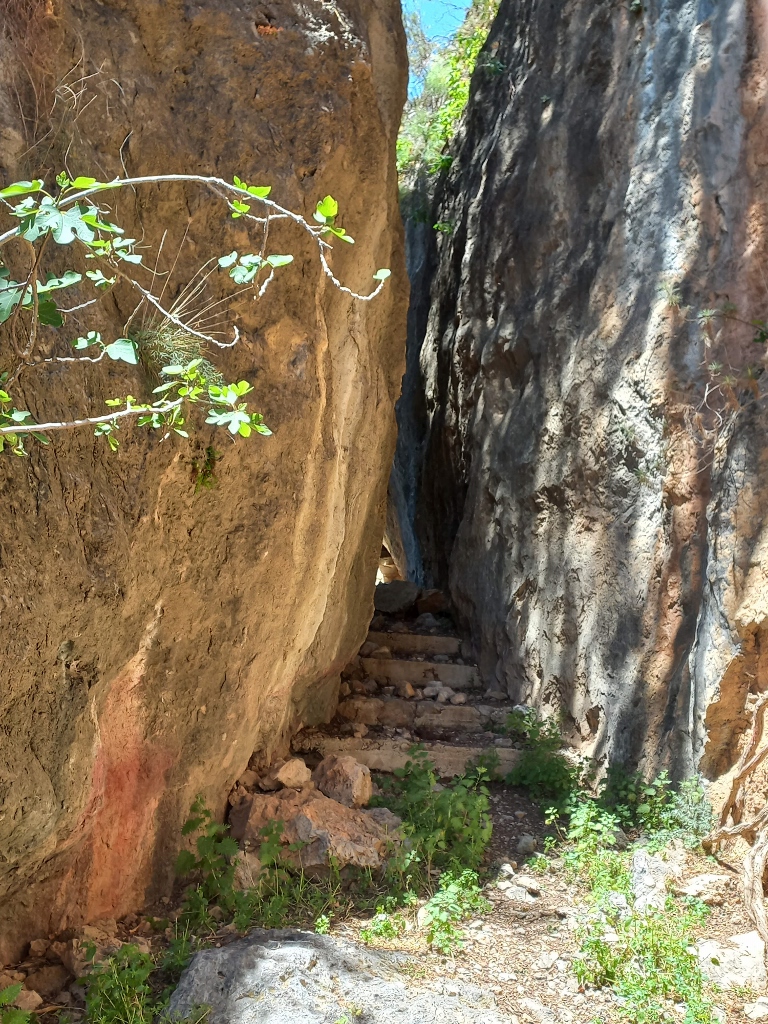 Kamares Gorge exit shot through the openings in the fence
Kamares Gorge exit shot through the openings in the fence
While a few of us were occupied around the cave, Saša finally spotted a bearded vulture, but the bird didn’t linger there for long. The rest of us gathered and started looking up at the sky, but the bearded vulture had already flown away. A consolation came in the form of a couple of griffon vultures flying by occasionally.
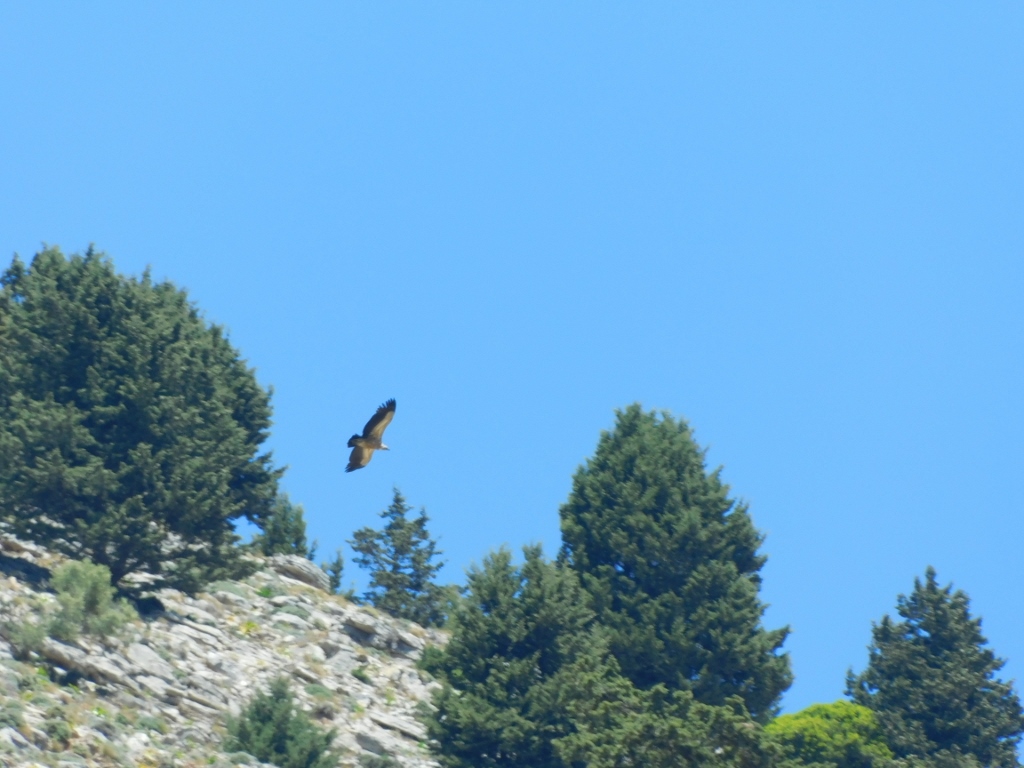 Griffon vulture at the Kamares Gorge
Griffon vulture at the Kamares Gorge
While we still hoped for the appearance of another bearded vulture, I resumed taking photos of the surroundings, which seemed very appealing to me.
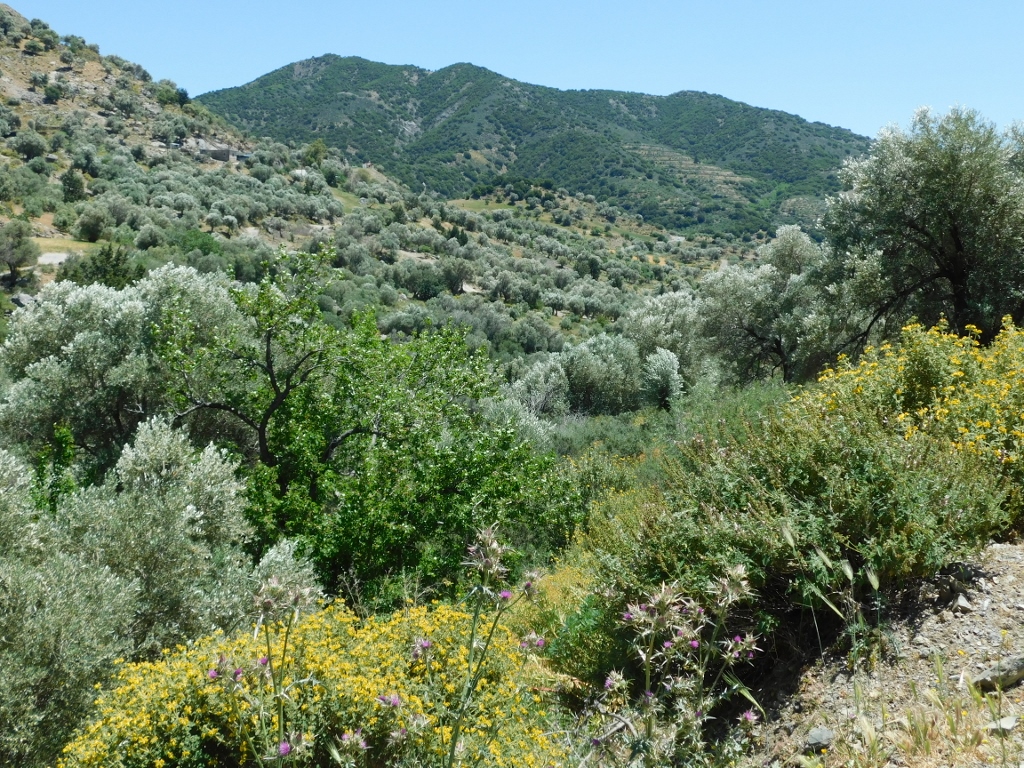 Area close to the Kamares Gorge
Area close to the Kamares Gorge
The plan was to backtrack a bit to the main road and then take a side road to another high area in hopes of spotting another bearded vulture, but aside from the beautiful scenery, there weren’t any particularly interesting birds.
 View from up high near Kamares village
View from up high near Kamares village
Apart from the gorge, the village of Kamares is also known for the famous Kamares Cave. This archaeological site has yielded some of the finest examples of the Minoan pottery, known as the “Kamares ware,” named after the sacred Minoan cave found there. Beautiful artefacts from this area and period can be seen at the Heraklion Archaeological Museum. I have already posted a few photos of this exquisite pottery (see: https://www.svudapodji.com/en/crete-4/).
But what particularly excited me when I got home and examined this pottery more closely was that I had already found one jug from the Kamares ware so captivating when I first saw it that I had taken it as a challenge to try making it myself. Here is how it all turned out:
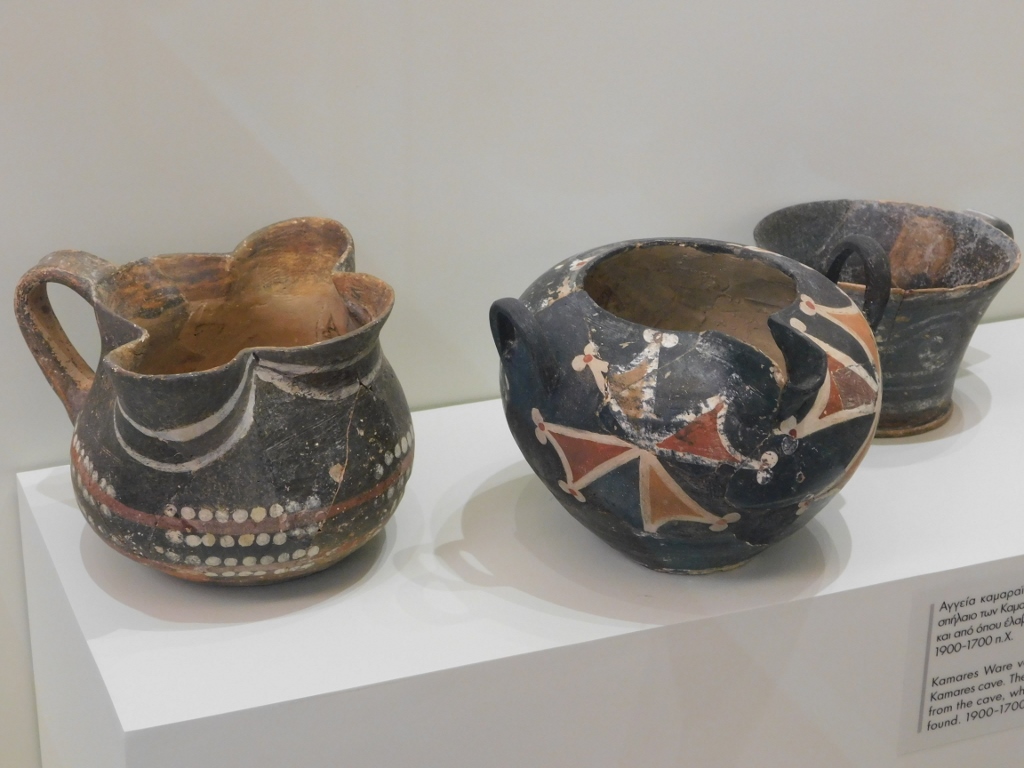 Kamares ware exhibits at the Heraklion Archaeological Museum
Kamares ware exhibits at the Heraklion Archaeological Museum
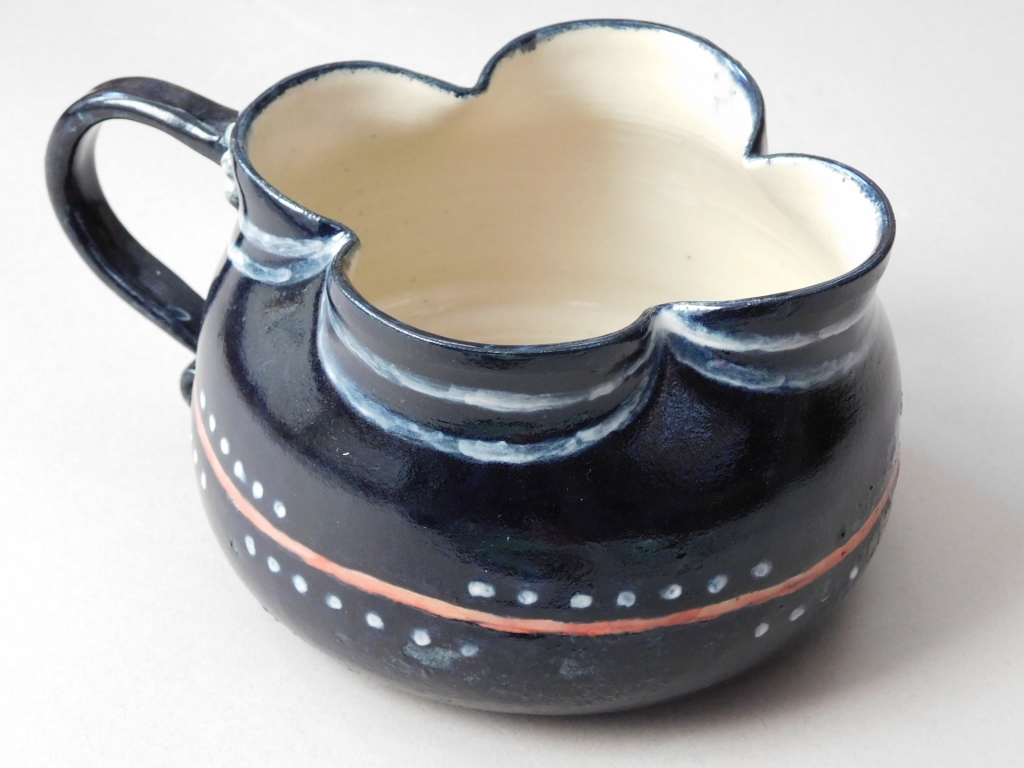 My replica of a Kamares ware jug
My replica of a Kamares ware jug
The Minoan artisans from Kamares were far superior potters compared to me, but I’m still amazed by the whole story and serendipity. It is but another example of how the Universe spins in magical and fascinating whirls and spirals.
As for our group, the plan was to drive to Matala, on the southern coast of Crete. I had been there a couple of years earlier, but the place is truly beautiful, so revisiting it was no bother at all. Besides, we all went first for a lovely lunch at a restaurant by the beach. The meal in the company of a friendly group of people was delightful and Matala Beach itself looked almost perfect.
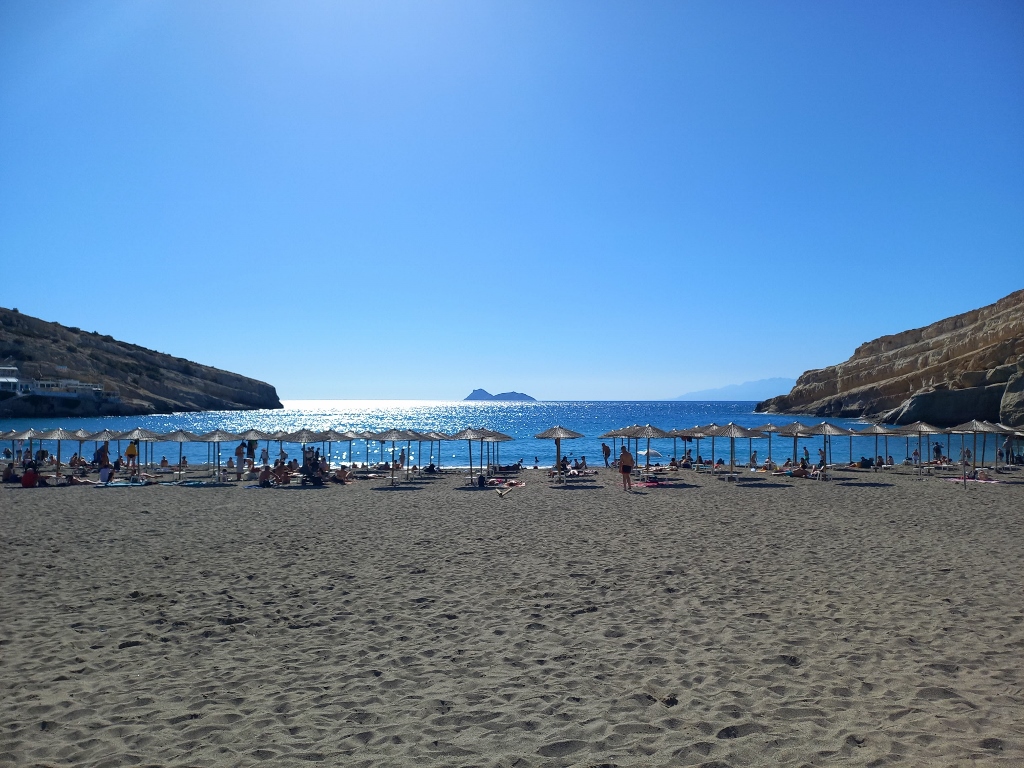 Matala Beach
Matala Beach
After lunch, a few of us went to explore the “caves” located on the cliff that borders the bay and the beach on the northern side, about which I’ve already written in my travel stories about Crete in 2022 (see: https://www.svudapodji.com/en/crete-14/).
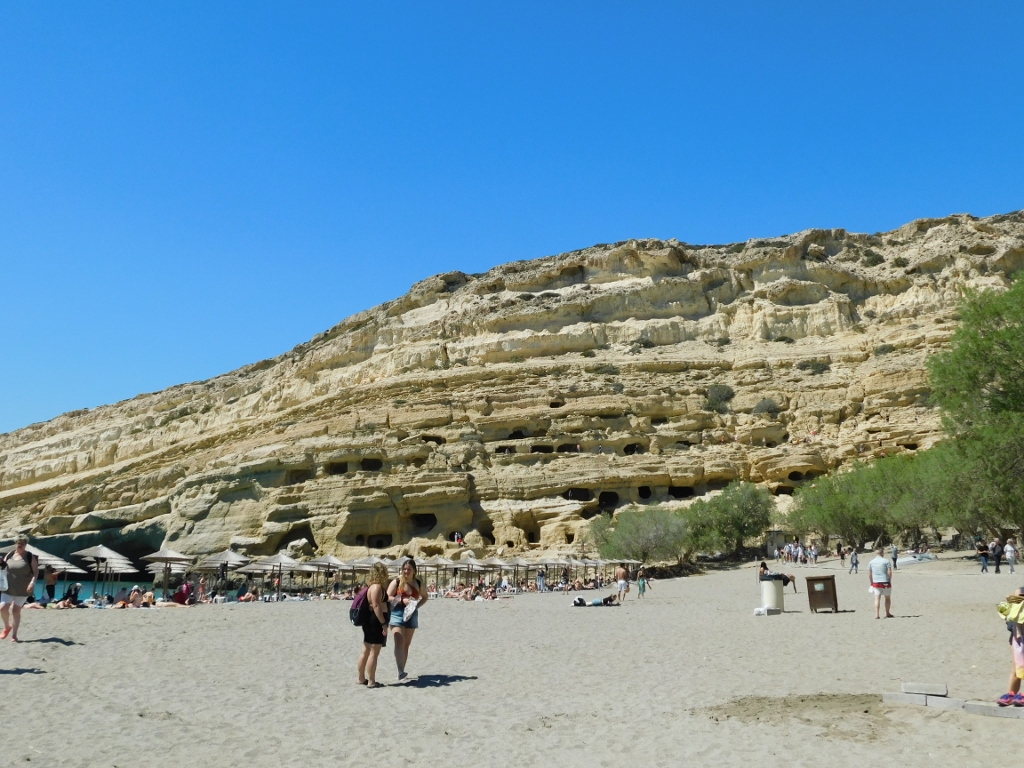 Caves in Matala
Caves in Matala
Back then, I arrived here very early and there were no other people around. To see the caves on the higher levels, one needs to climb over the rocks and have good footwear. At least, I don’t enjoy climbing rocks in beachwear, so I didn’t do it back in 2022.
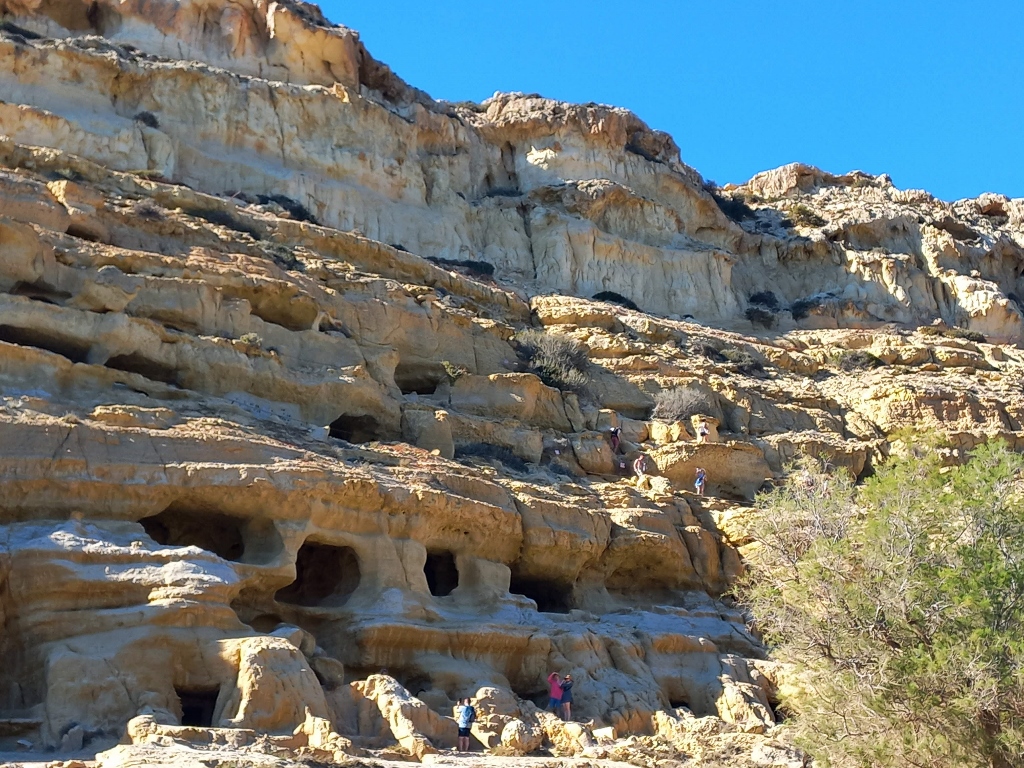 Caves in Matala
Caves in Matala
Now I had proper sneakers and I was also in company, so everything was easier and more enjoyable.
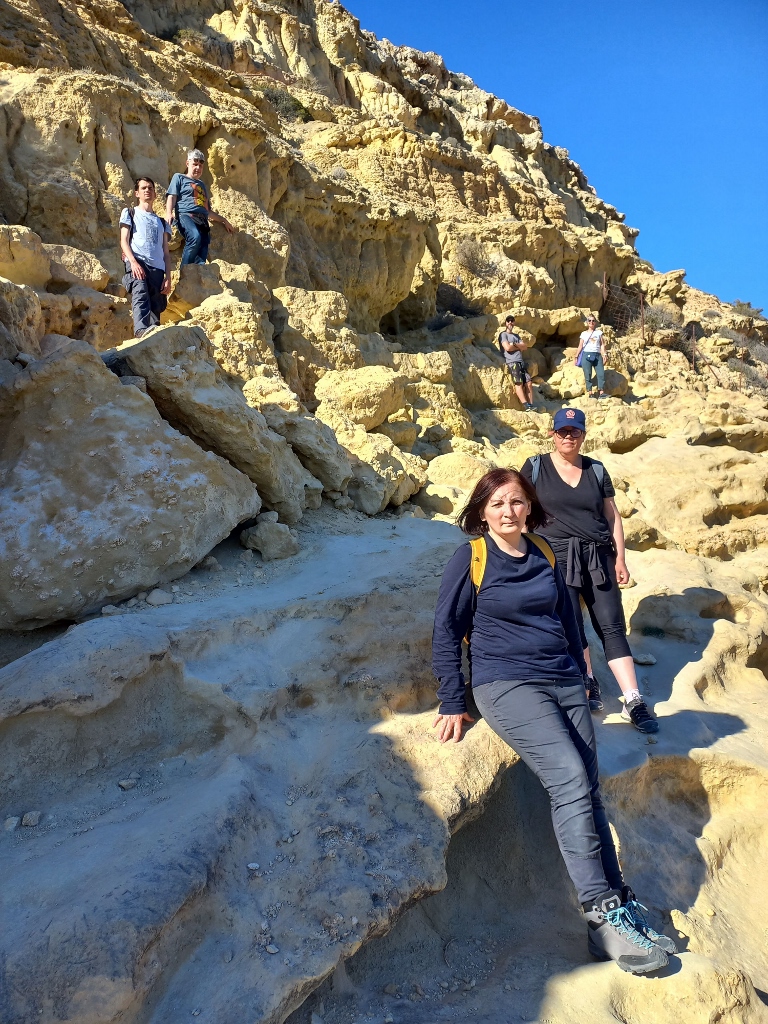 Vuk, Oliver, Marko, Irena, Beba and Sonja
Vuk, Oliver, Marko, Irena, Beba and Sonja
Sonja, Beba and I made it to a couple of the upper levels, but we didn’t go all the way to the highest levels. We left that to the other members of the group who had come here. Of course, despite having been here before, I still peeked into some of the “caves” made by people, about which I have already written.
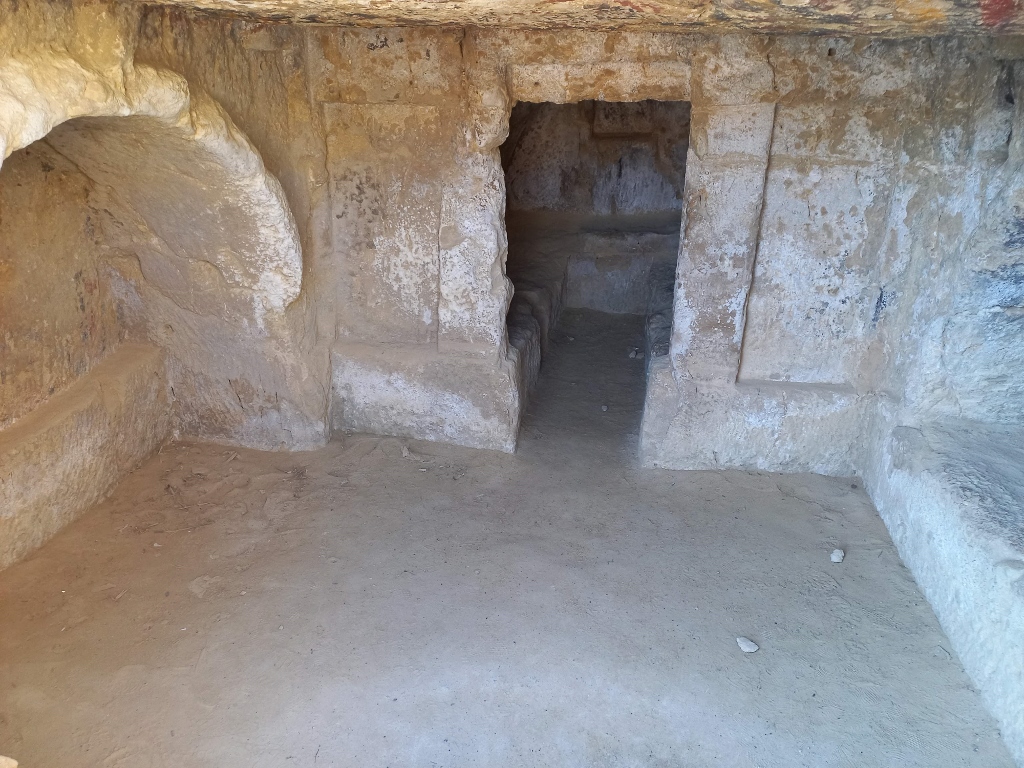 Caves in Matala, a detail
Caves in Matala, a detail
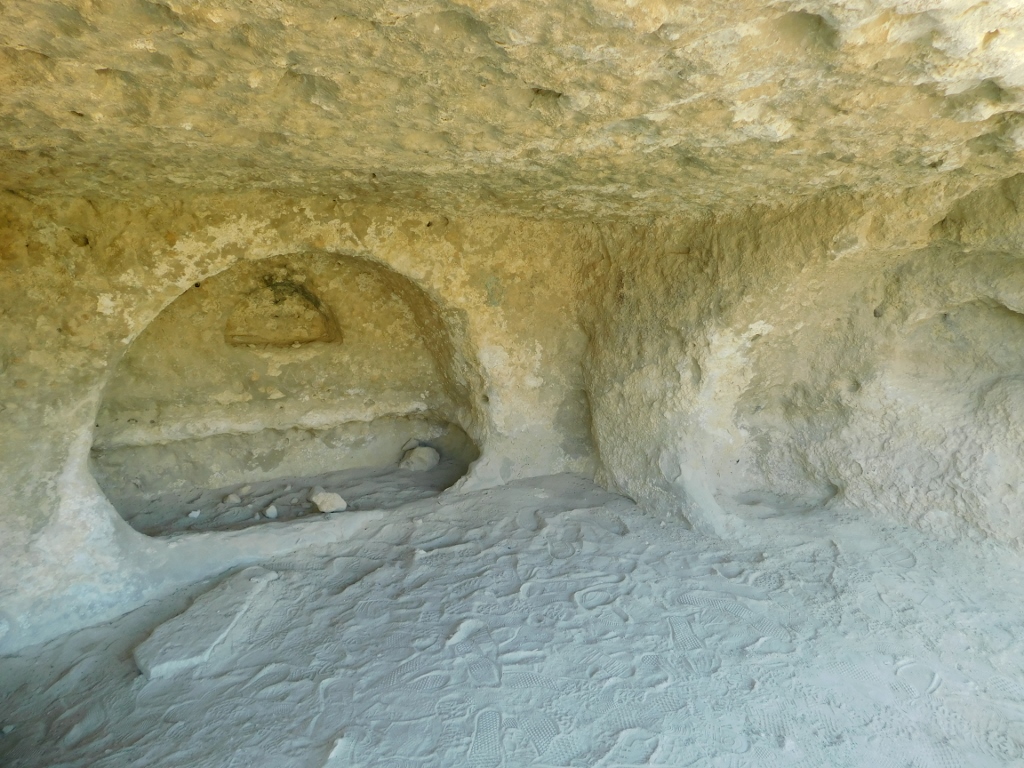 Caves in Matala, a detail
Caves in Matala, a detail
This climbing wasn’t always easy for me, but it was certainly beautiful and fulfilling, both as an experience and a mini-adventure. Plus, it offered a stunning view of the bay.
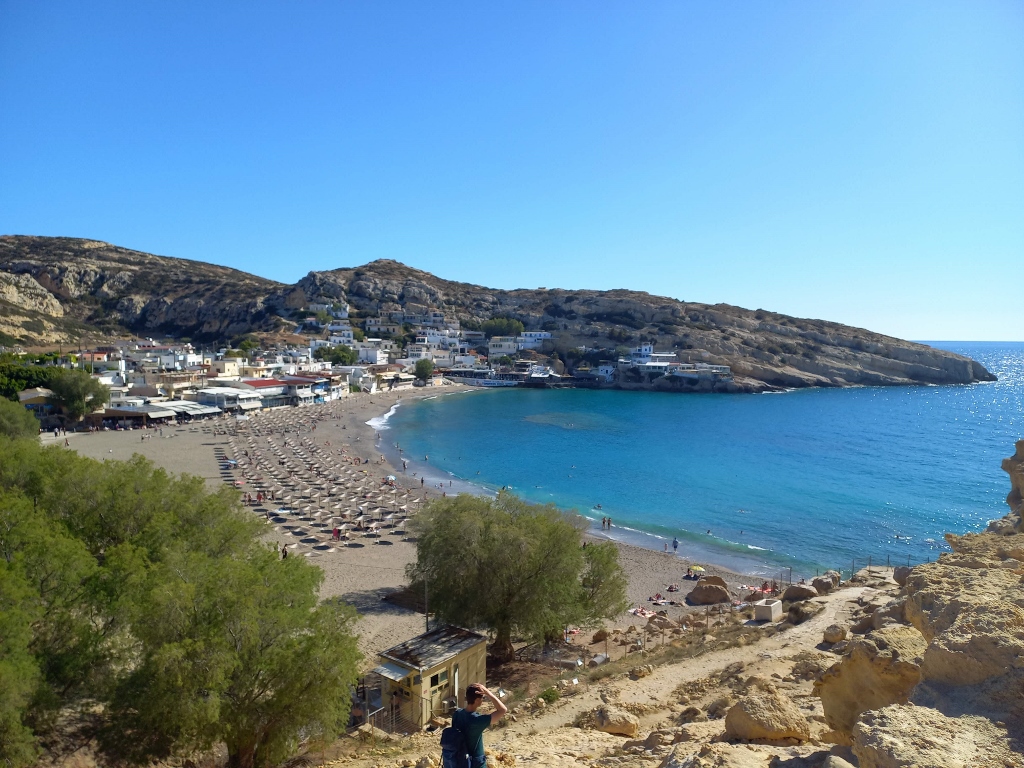 View at the Matala Beach
View at the Matala Beach
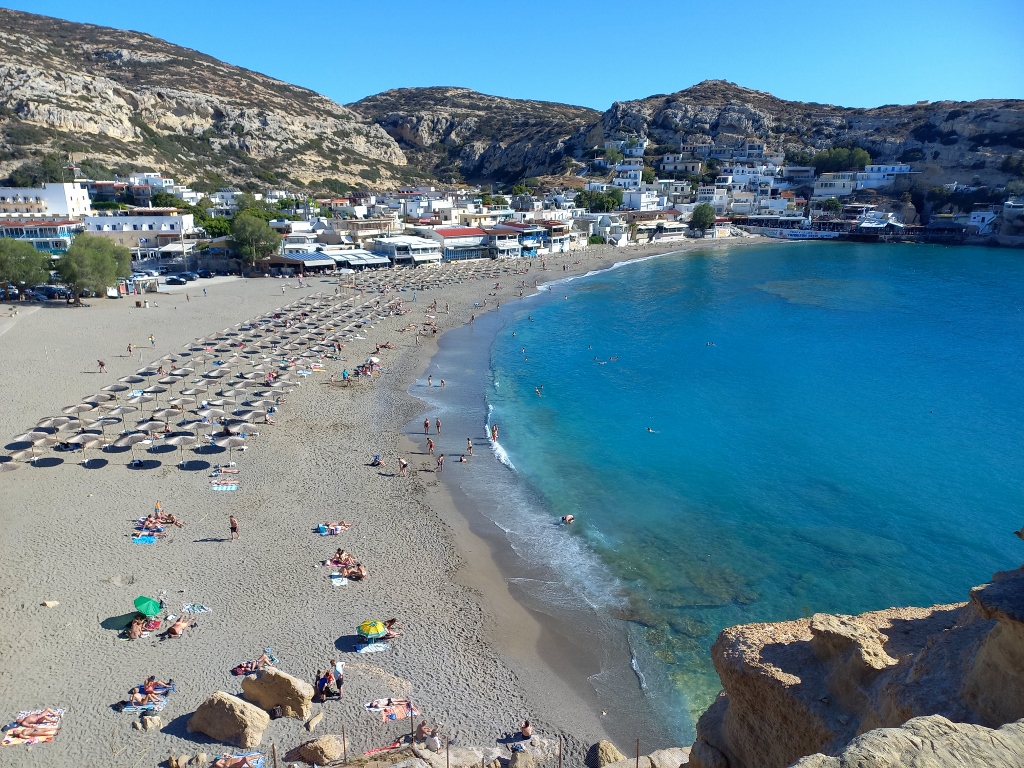 View at the Matala Beach
View at the Matala Beach
After that, we returned to the beach and a few younger members of the group went for a swim, while Sonja and I just dipped our feet. That was enough for us because the water was too cold for our liking.
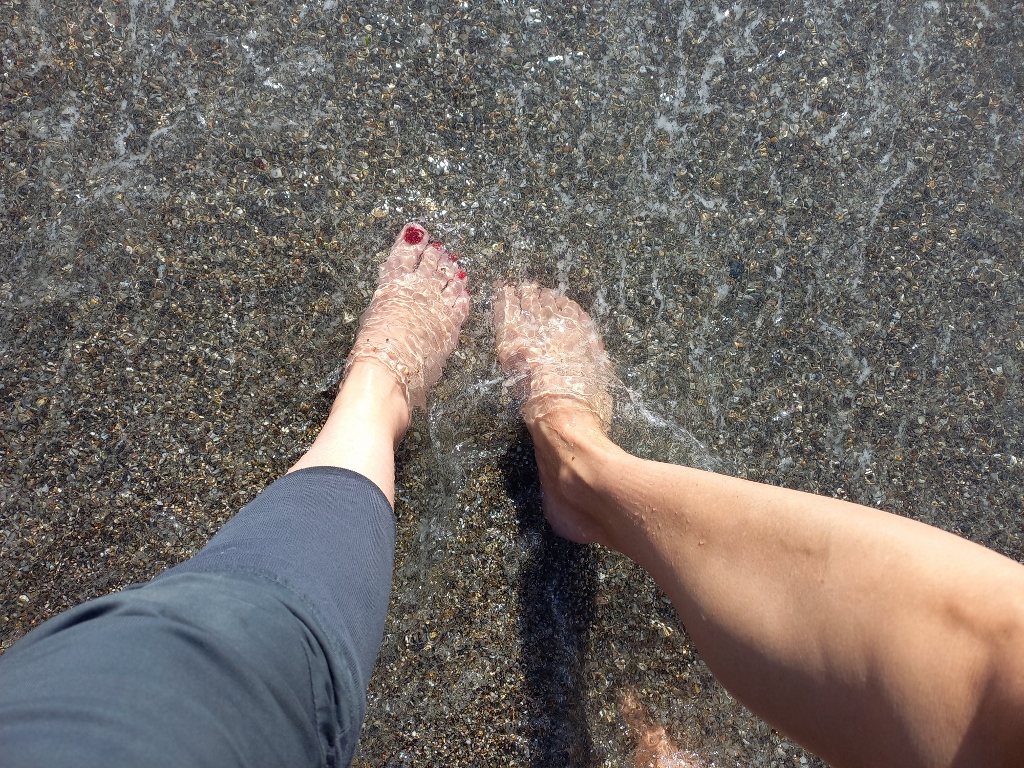 Dipping feet into the water at the Matala Beach
Dipping feet into the water at the Matala Beach
At the agreed time, we gathered at the lot where our cars were parked and then we returned to Malia, each car following its own driver’s pace.
Travelling around Crete in May 2024: